Modern Tudor exteriors represent a captivating fusion of old-world charm and contemporary sophistication. This architectural style transforms the traditional English Tudor aesthetic through streamlined materials, fresh color palettes, and innovative design approaches. Today's interpretations maintain the iconic steep-pitched roofs, distinctive gabling, and architectural character while embracing modern living requirements. These homes showcase how classic half-timbering, arched doorways, and prominent chimneys can be reimagined with clean lines, sustainable materials, and updated proportions. Whether featuring bold black-and-white contrasts, warm neutral tones, or mixed-material facades, modern Tudor exteriors demonstrate that timeless design elements can successfully adapt to contemporary aesthetics while preserving their inherent elegance and storybook appeal.

1. Modern Tudor Exterior with Black and White Contrast
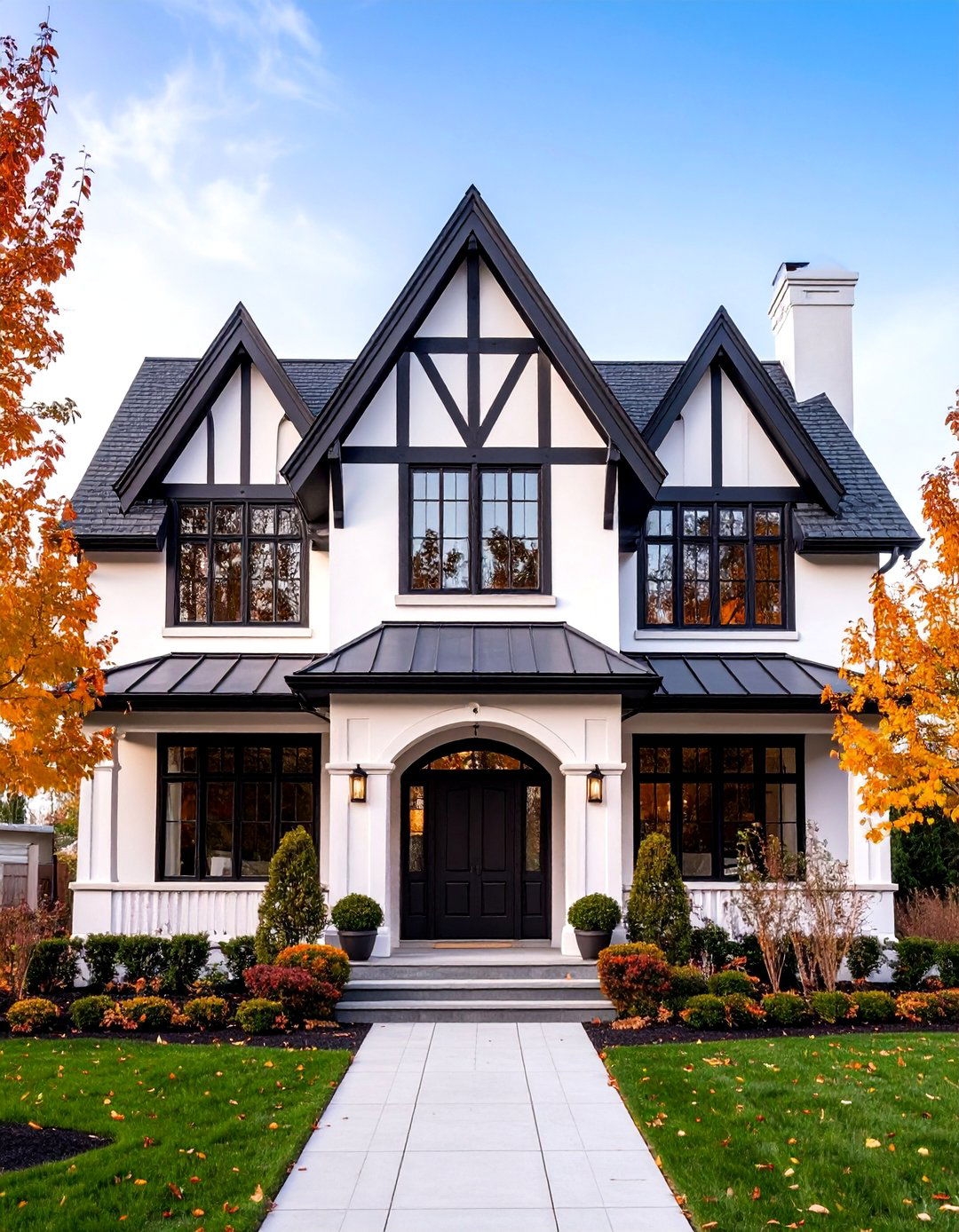
The striking black and white color scheme transforms traditional Tudor architecture into a contemporary masterpiece. Crisp white stucco walls paired with bold black half-timbering create dramatic visual impact while maintaining the style's authentic character. This monochromatic approach eliminates the dated appearance of traditional brown timber, instead offering a fresh, sophisticated look that feels both timeless and modern. Black window frames and trim elements reinforce the contrast, while maintaining the Tudor's signature steep gables and architectural proportions. The simplified color palette allows the home's structural elements to shine, creating clean lines that complement modern landscaping. This design approach works particularly well in urban settings where contemporary aesthetics are valued, yet historical charm remains desirable for neighborhood consistency.
2. Modern Tudor Exterior with Mixed Stone and Stucco Materials
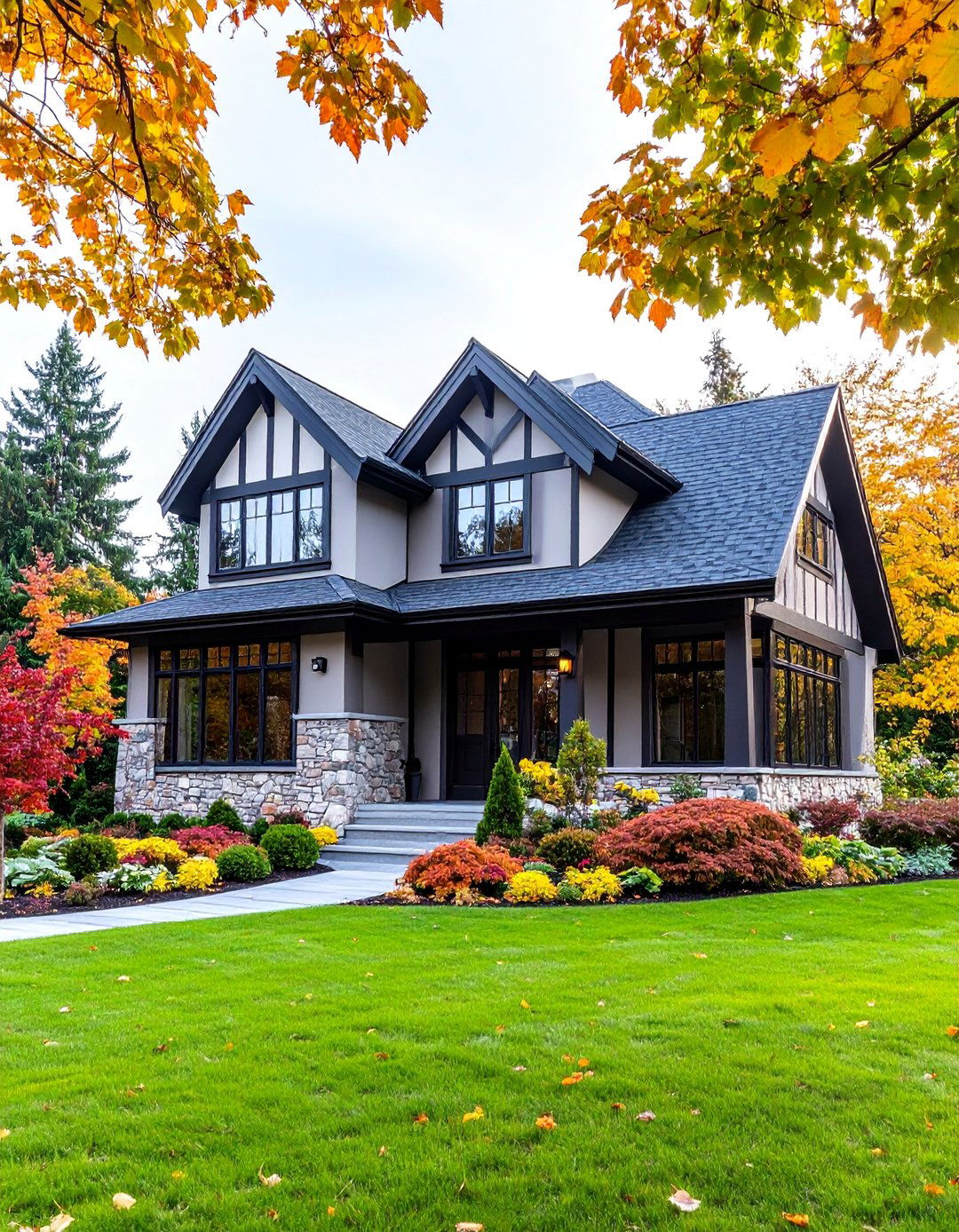
This design embraces texture through carefully selected natural materials that honor Tudor tradition while embracing modern durability. Warm-toned stone anchors the foundation and lower walls, transitioning to smooth stucco on upper gables for visual lightness. The material combination creates depth and interest without overwhelming the architectural form. Contemporary mortar techniques and precisely cut stone provide cleaner lines than traditional rustic applications. Subtle half-timbering in charcoal gray bridges the materials, maintaining Tudor authenticity while feeling current. Large windows with black frames punctuate the facade, ensuring ample natural light reaches interior spaces. This approach works excellently for families seeking the substantial feel of traditional Tudor construction with improved weather resistance and lower maintenance requirements than authentic historical materials would provide.
3. Modern Tudor Exterior with Copper Accent Features
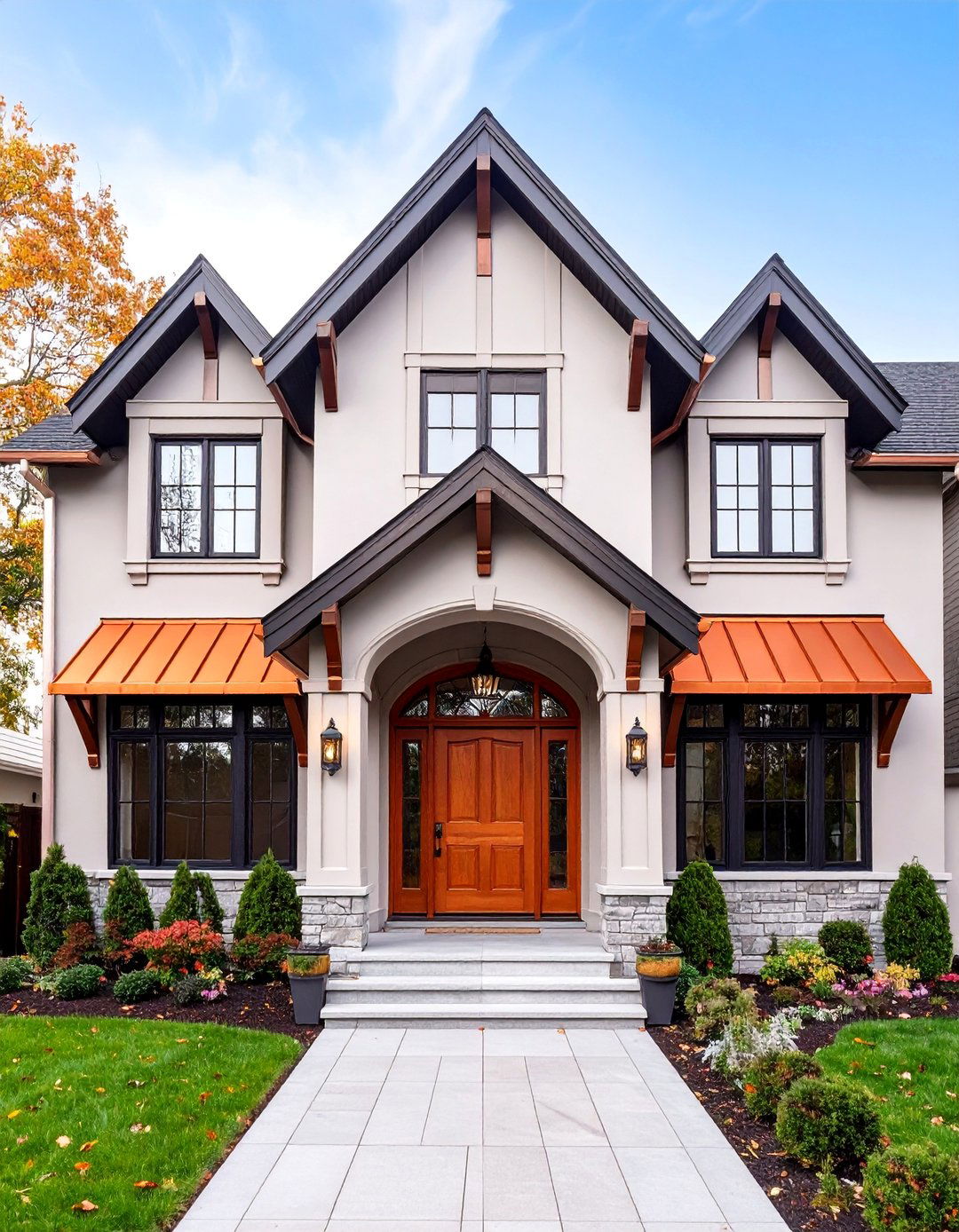
Warm copper elements elevate the traditional Tudor palette through sophisticated metallic accents that age beautifully over time. Copper gutters, downspouts, and awnings provide functional beauty while adding contemporary flair to classic architectural forms. The metal's natural patina process ensures the home's appearance evolves gracefully, developing character that complements the Tudor style's emphasis on authentic materials. Clean white or light gray stucco walls serve as neutral backdrops, allowing copper features to create striking focal points around doorways, window surrounds, and roofline details. Black window frames and minimal half-timbering maintain the Tudor essence without competing with copper's warmth. This design particularly appeals to homeowners who appreciate materials that improve with age, creating a living finish that tells the story of time and weather.
4. Modern Tudor Exterior with Sage Green Color Palette
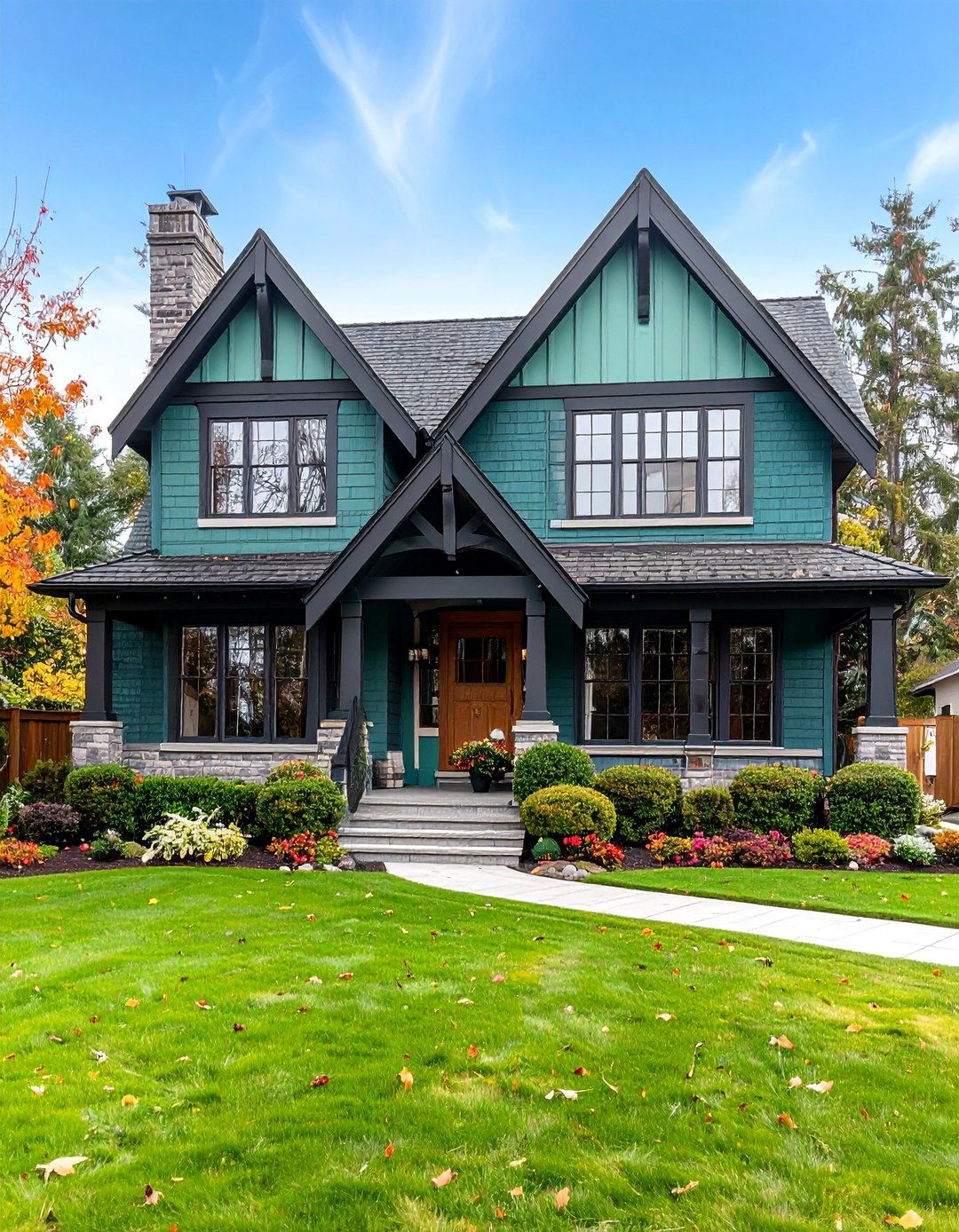
Soft sage green brick transforms the traditional Tudor exterior into a serene, nature-inspired design that feels both sophisticated and welcoming. This unexpected color choice maintains the substantial feel of masonry construction while offering a fresh alternative to conventional red or brown brick. Dark charcoal trim and window frames provide necessary contrast, ensuring architectural details remain crisp and defined. The sage tone harmonizes beautifully with natural landscaping, creating seamless connections between home and garden. Traditional gable structures and tall windows preserve Tudor proportions while the color update gives the entire composition a contemporary edge. This approach particularly suits homeowners seeking distinctive curb appeal that stands apart from typical suburban color schemes, while remaining tasteful and timeless enough to maintain broad market appeal over time.
5. Modern Tudor Exterior with Simplified Half-Timbering Design

Contemporary half-timbering strips away ornate details in favor of clean, geometric patterns that honor tradition while embracing modern minimalism. Wide, flat timber boards create bold grid patterns against smooth stucco surfaces, eliminating the busy decorative elements that can make traditional Tudors feel overwhelming. The simplified approach allows the home's structural proportions to speak clearly, emphasizing the beauty of well-designed gables and window placement. Dark brown or black timber maintains authenticity while providing sharp contrast against white or cream backgrounds. This design strategy works particularly well for smaller homes where excessive detailing might feel cramped or disproportionate. The result is a sophisticated interpretation that maintains Tudor character while feeling appropriate for contemporary neighborhoods that value both tradition and restraint in architectural expression.
6. Modern Tudor Exterior with Floor-to-Ceiling Windows

Expansive glazing transforms the traditionally compartmentalized Tudor into a light-filled contemporary home that maintains its architectural identity. Floor-to-ceiling windows within traditional arched openings create stunning focal points while dramatically increasing natural light penetration. Steel or black aluminum frames provide necessary structural support while maintaining slender profiles that don't compete with the Tudor's massive proportions. The glazing strategy works particularly well on rear facades where privacy is less concern, creating seamless indoor-outdoor connections. Traditional materials like stone and stucco frame these modern window installations, ensuring the updates feel integrated rather than applied. This approach appeals to families who love Tudor aesthetics but require the open, bright interiors that contemporary living demands, successfully bridging historical character with modern lifestyle requirements through thoughtful architectural integration.
7. Modern Tudor Exterior with Geometric Window Patterns
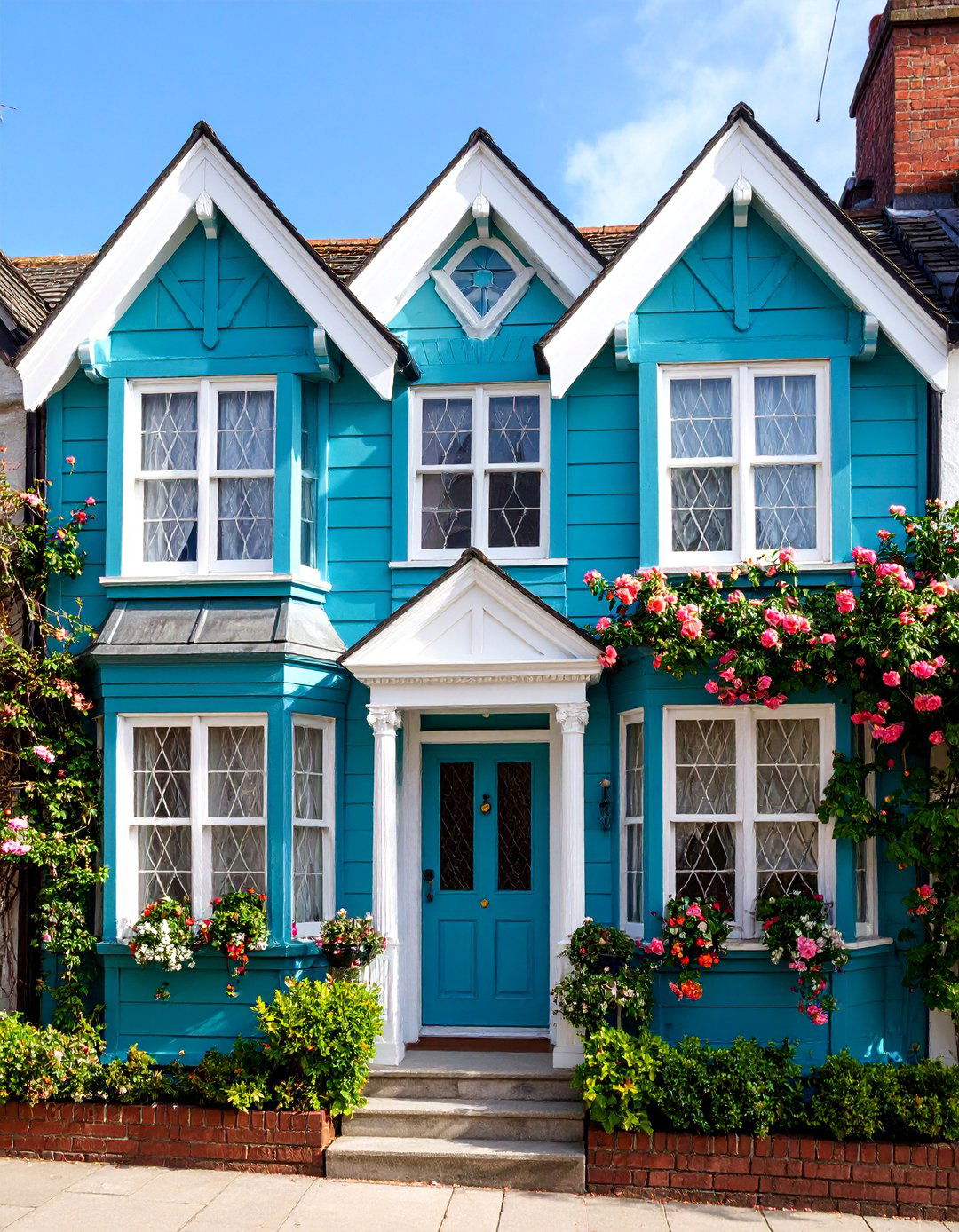
Diamond-shaped window grids and geometric glazing patterns provide artistic flair that honors Tudor tradition while feeling intentionally contemporary. These carefully designed window treatments reference historical leaded glass techniques but employ modern materials and cleaner geometries for updated appeal. The patterns create visual interest across large wall surfaces, breaking up expanses of stucco or brick with rhythmic decorative elements. Black or dark bronze window frames ensure these geometric details read clearly against lighter backgrounds. This design approach works particularly well for homeowners who appreciate decorative elements but prefer them to feel purposeful rather than purely historical. The geometric patterns can be customized to reflect personal style preferences while maintaining the Tudor's essential character through proportion and placement within traditional gable structures.
8. Modern Tudor Exterior with Solar Panel Integration
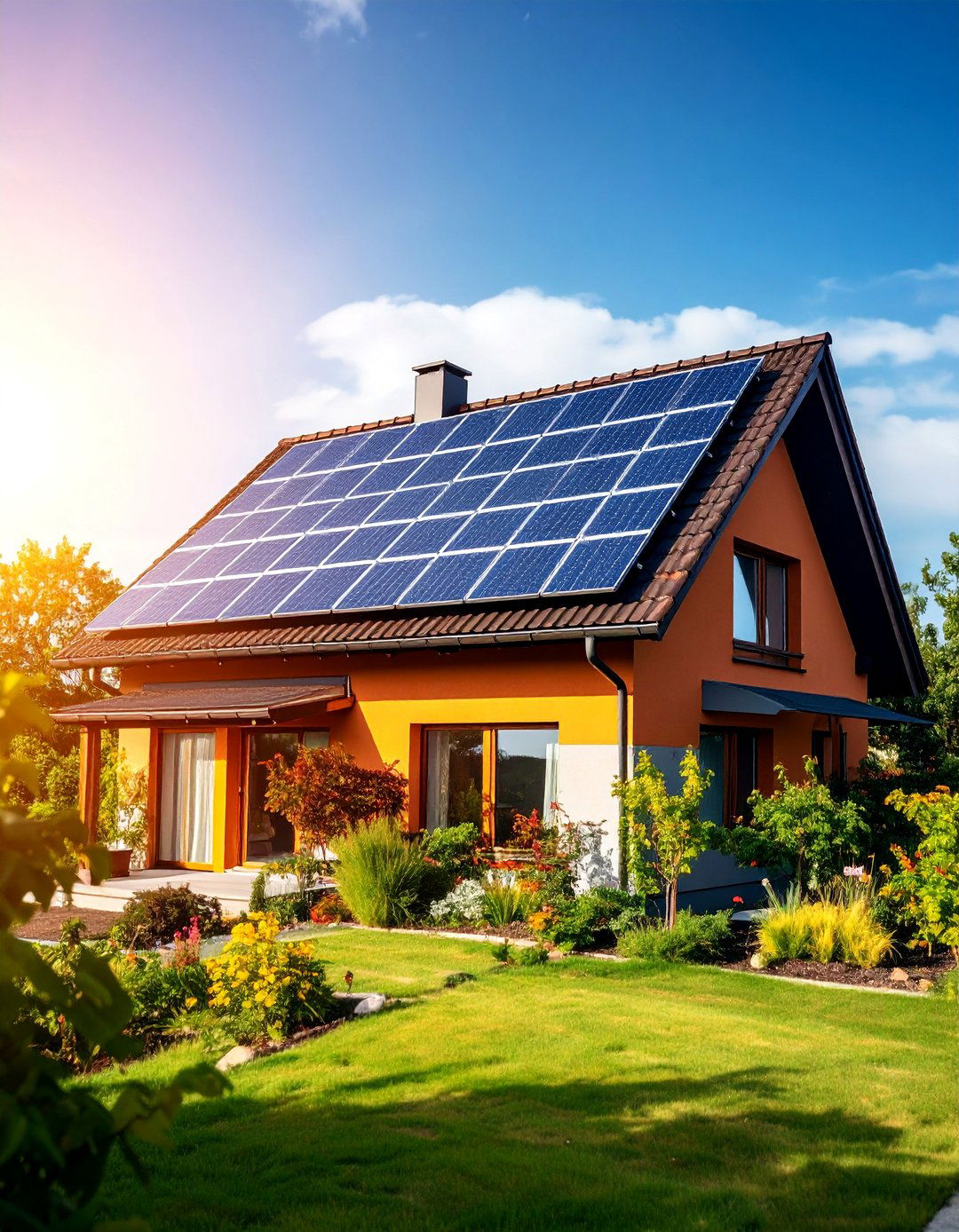
Environmental consciousness meets architectural heritage through carefully integrated solar installations that enhance rather than detract from Tudor aesthetics. Sleek black panels align with the steep roof planes, creating geometric patterns that complement the home's angular gabling. Modern mounting systems eliminate bulky hardware, allowing panels to sit flush with roofing materials for streamlined appearance. The sustainable technology proves that historical styles can embrace contemporary environmental responsibility without sacrificing visual appeal. Traditional materials throughout the facade balance high-tech elements, ensuring the home maintains its essential Tudor character. This approach particularly appeals to environmentally conscious homeowners who refuse to compromise architectural integrity for green technology. The integration demonstrates how thoughtful design can honor both historical precedent and future-focused values, creating homes that serve both aesthetic and environmental goals successfully.
9. Modern Tudor Exterior with Rustic Wood Siding Accents
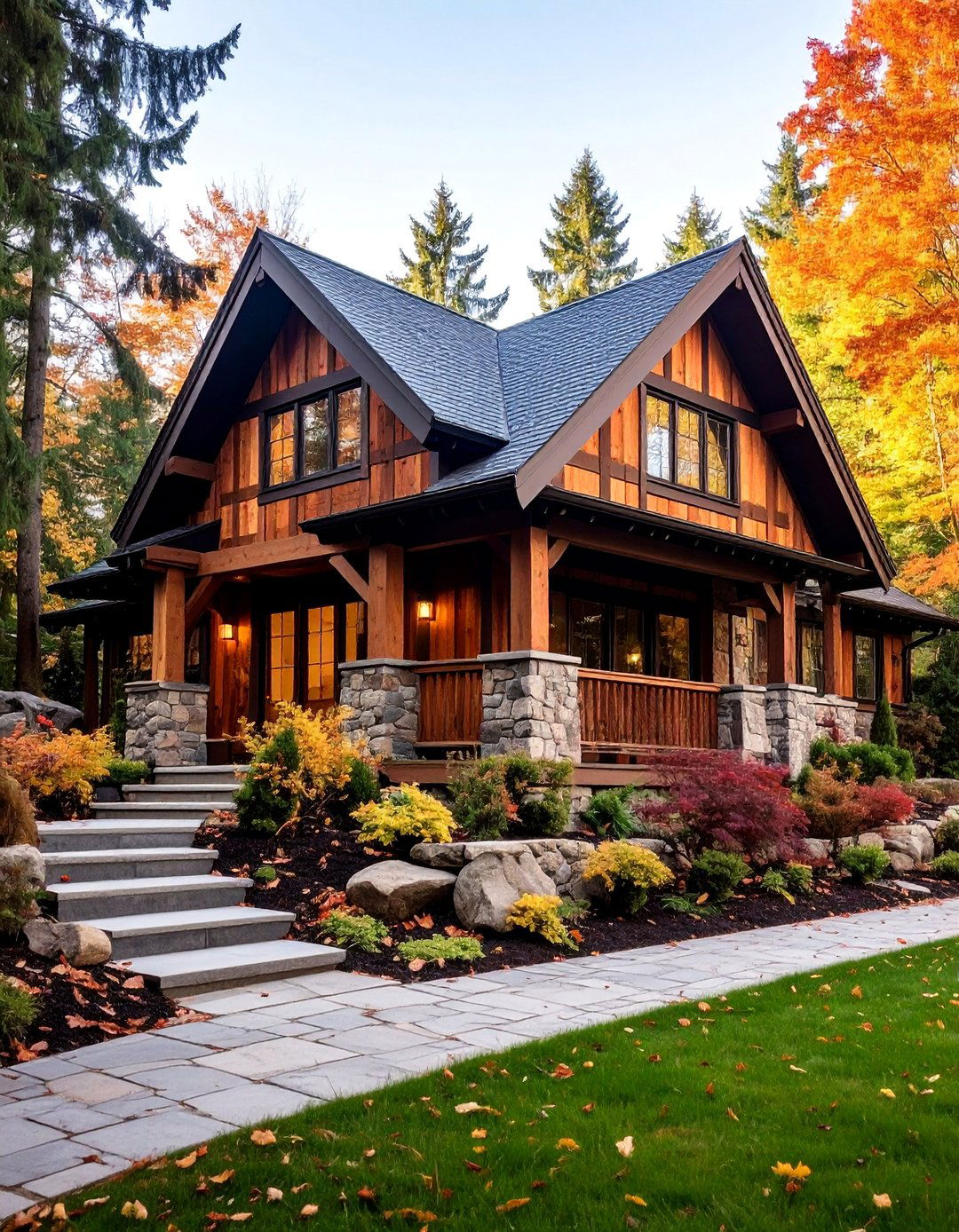
Natural wood siding adds warmth and texture to create a Tudor cottage aesthetic that feels both authentic and contemporary. Horizontal board-and-batten or vertical plank siding replaces traditional half-timbering with full wall coverage that provides superior weather protection. The wood's natural grain and color variations create visual interest while maintaining the Tudor's emphasis on authentic materials. Stone or brick foundations anchor these lighter wood elements, providing necessary visual weight and traditional material connections. Natural stain finishes preserve wood character while modern treatments ensure longevity and weather resistance. This approach works excellently for rural or wooded settings where the natural materials harmonize with surrounding landscapes. The design appeals to homeowners seeking Tudor character with cabin-like warmth and the practical benefits of modern siding systems that require less maintenance than traditional stucco and timber construction.
10. Modern Tudor Exterior with Arched Glass Entry Features
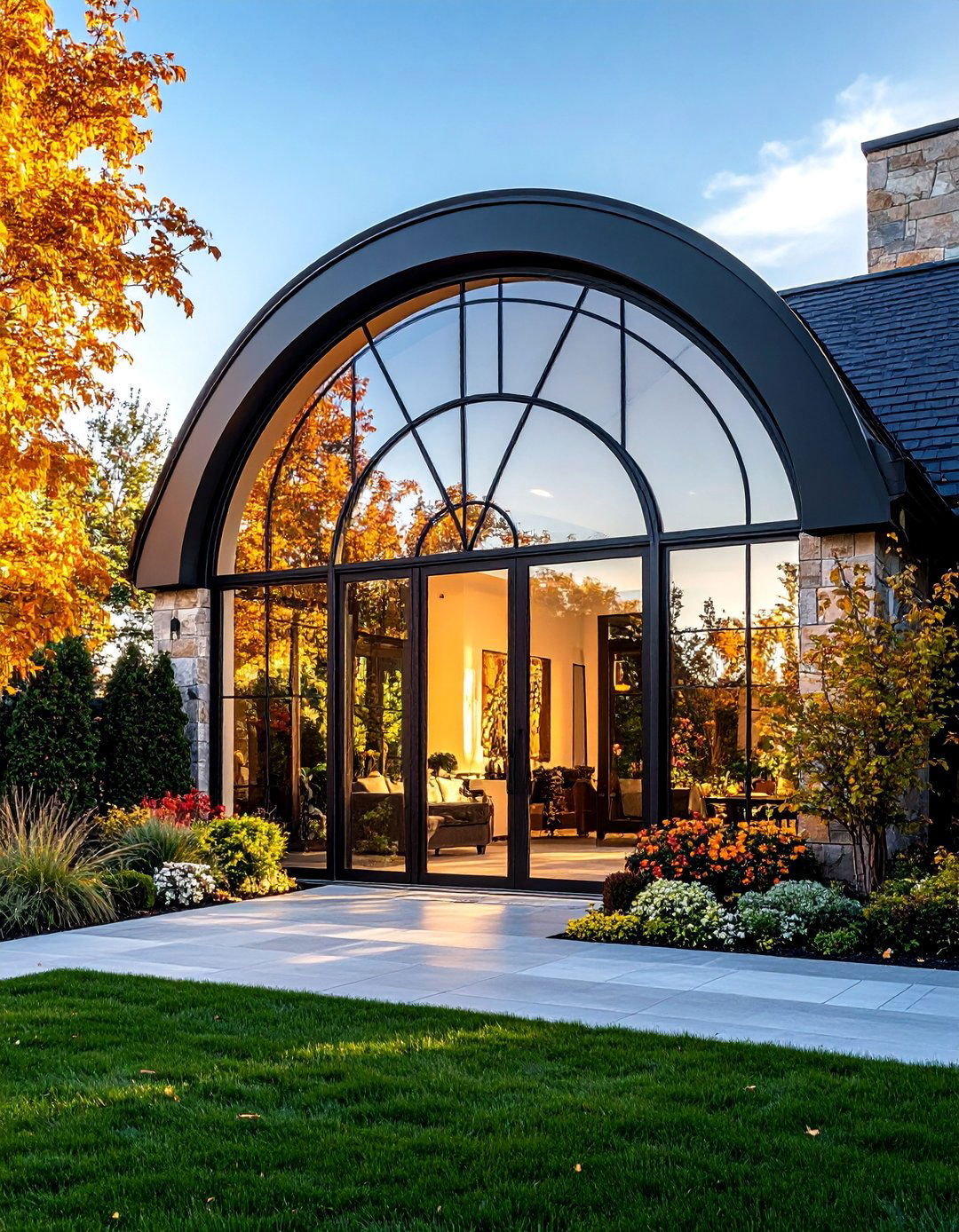
Dramatic arched glass installations transform traditional Tudor doorways into stunning contemporary focal points that welcome abundant light. Large-scale glazing within classical arch forms creates striking entries that honor historical proportions while embracing modern transparency. Steel or black aluminum framing provides necessary structure while maintaining slender profiles that emphasize the glass rather than the framework. These installations often extend from foundation to roofline, creating impressive vertical elements that enhance the Tudor's naturally dramatic proportions. Interior spaces benefit from increased natural light and visual connections to landscaping. The approach works particularly well for homes in safe neighborhoods where security concerns don't preclude large glass installations. This design strategy appeals to homeowners who appreciate Tudor architecture but desire the bright, open feeling that extensive glazing provides for contemporary living requirements.
11. Modern Tudor Exterior with Metal Roofing Systems
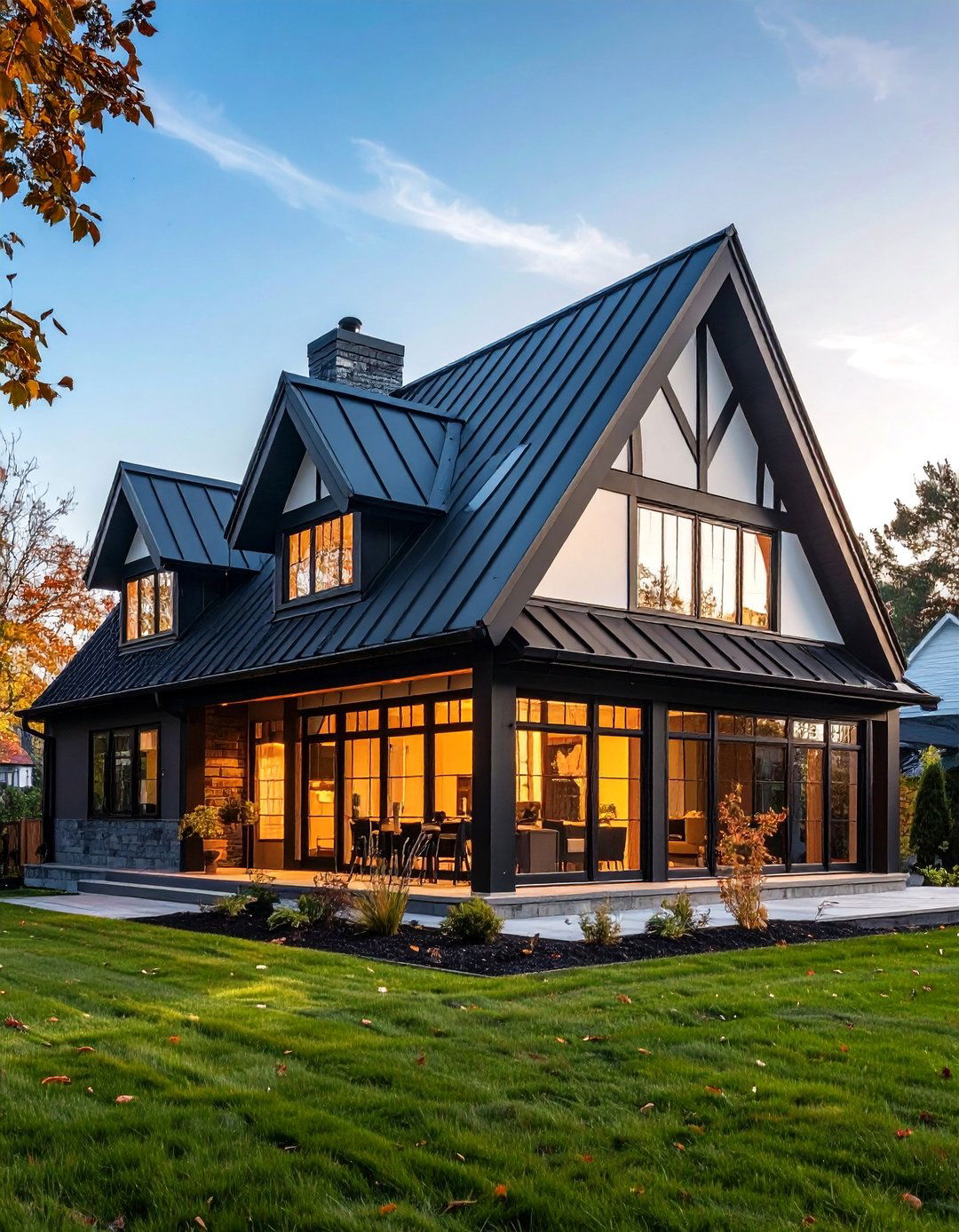
Contemporary metal roofing materials provide superior durability while maintaining the Tudor's characteristic steep roof profiles and dramatic gabling. Standing seam or corrugated metal systems offer longevity and weather resistance far exceeding traditional materials while supporting the style's emphasis on substantial construction. Dark colors like charcoal, black, or deep bronze complement traditional color palettes while providing modern performance benefits. The clean lines of metal roofing systems enhance rather than detract from Tudor proportions, creating crisp edges that define gable structures clearly. This material choice particularly appeals to homeowners in challenging climates where weather resistance is paramount. The investment in premium roofing materials provides long-term value through reduced maintenance and improved energy efficiency, while the contemporary materials prove that historical styles can embrace modern technology without sacrificing essential architectural character or visual appeal.
12. Modern Tudor Exterior with Monochromatic Gray Palette

Sophisticated gray tones create a unified color scheme that emphasizes architectural form while maintaining Tudor authenticity through proportion and detailing. Various gray shades from light to charcoal provide subtle contrast without the dramatic color changes traditional Tudors often employ. This approach allows the home's structural elements—gables, chimneys, windows—to define visual interest through shape rather than color contrast. The monochromatic palette feels inherently contemporary while respecting Tudor traditions through material choices and architectural proportions. Stone, stucco, and timber elements all work within the gray family, creating sophisticated unity. This design strategy particularly appeals to homeowners seeking understated elegance that won't become dated or clash with changing landscape designs. The neutral palette provides an excellent backdrop for seasonal plantings and outdoor furnishings while maintaining year-round sophistication that enhances property values through timeless appeal.
13. Modern Tudor Exterior with Limestone and Brick Combination
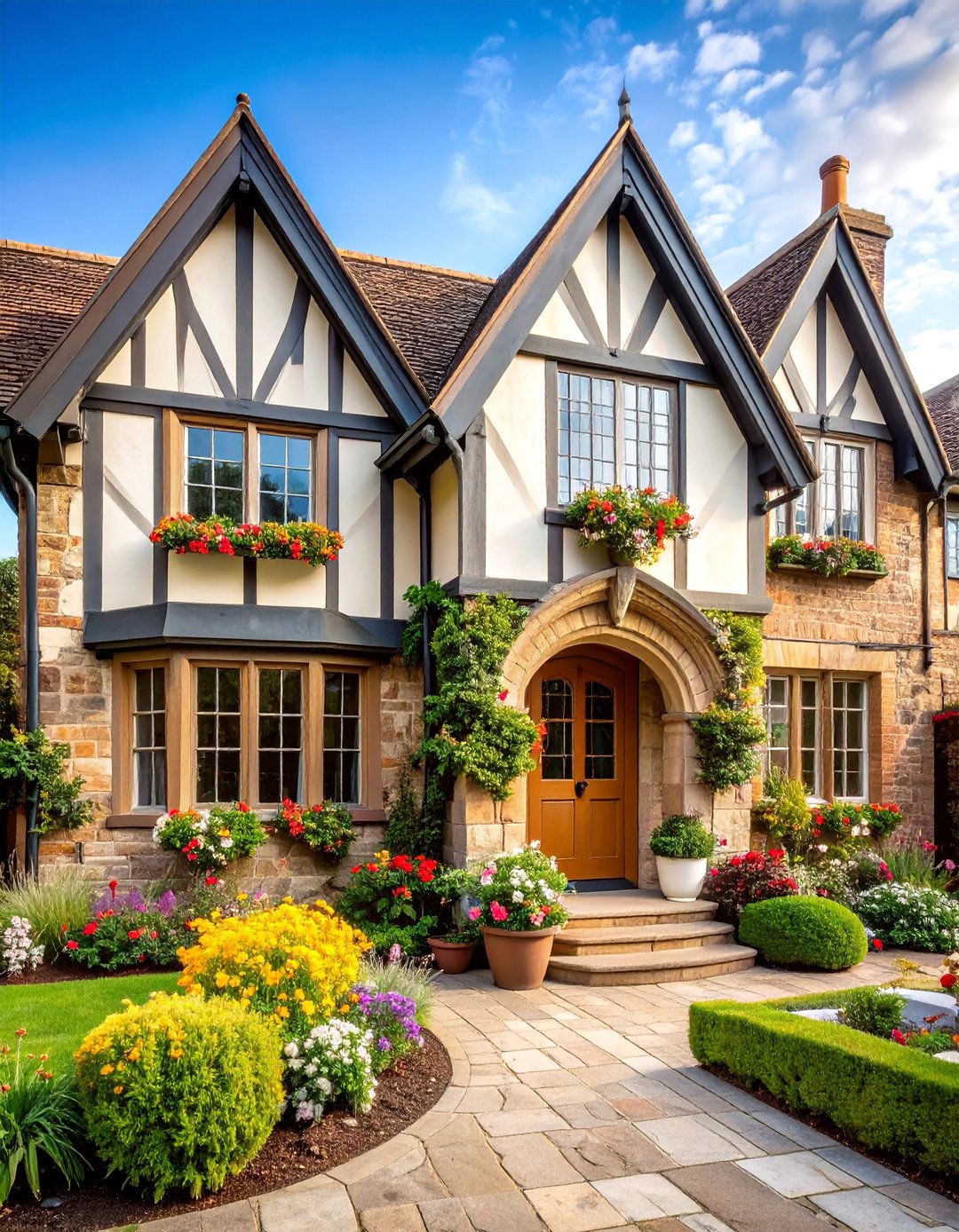
Natural limestone paired with complementary brick creates a sophisticated material palette that honors Tudor masonry traditions while providing contemporary durability and beauty. The limestone's smooth, consistent texture contrasts beautifully with brick's varied surface and color, creating visual depth across facade surfaces. This combination works particularly well around entry areas, window surrounds, and architectural transitions where material changes can emphasize important design elements. Modern installation techniques ensure superior weather resistance while maintaining authentic appearance. The neutral color palette of cream limestone and warm brick provides excellent flexibility for window trim and accent colors. This approach appeals to homeowners seeking substantial, permanent materials that will age gracefully while providing the authentic masonry appearance that defines quality Tudor construction. The material combination ensures the home maintains its architectural integrity while providing modern performance standards for weather resistance and thermal efficiency.
14. Modern Tudor Exterior with Contemporary Landscape Integration
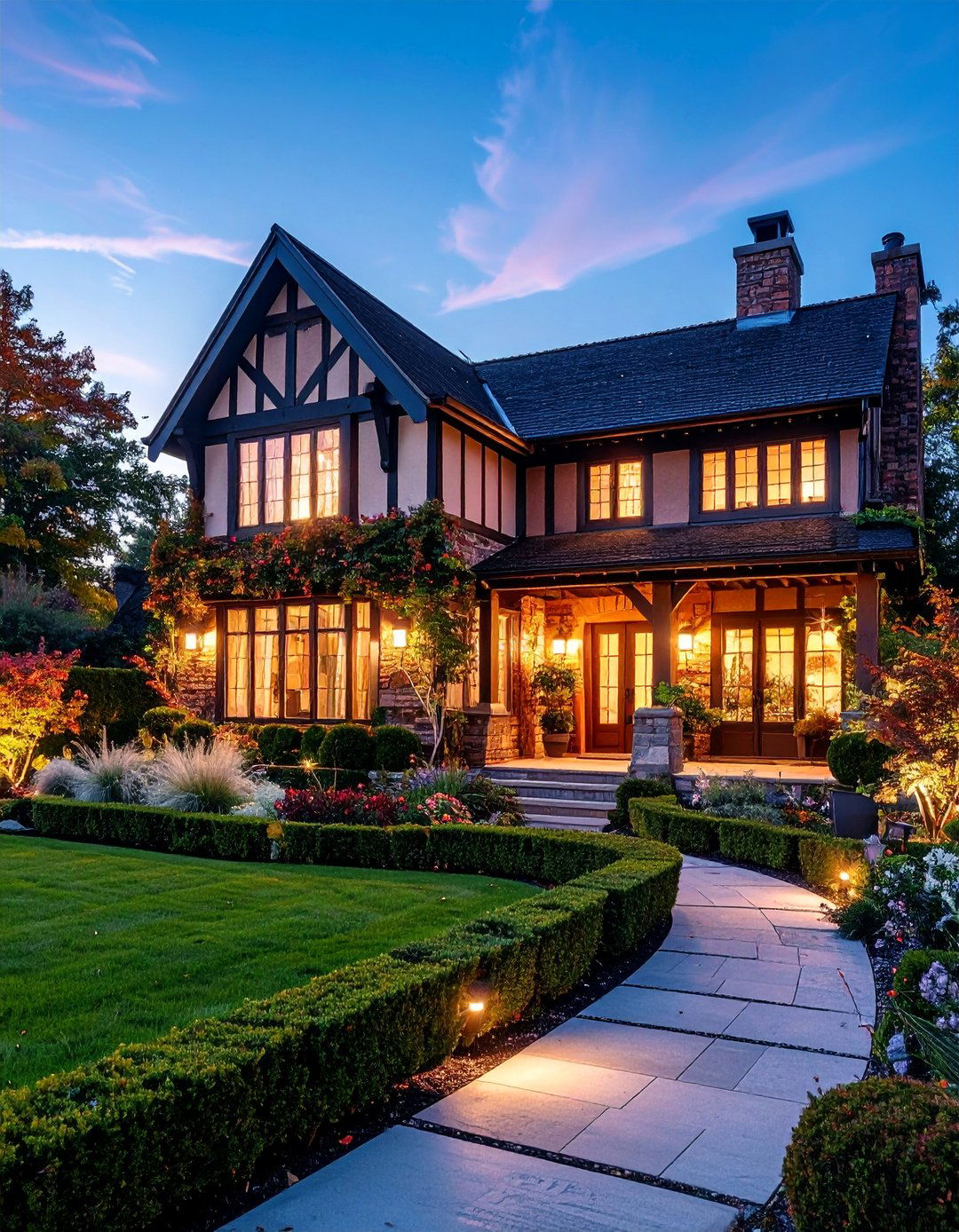
Clean-lined landscaping complements Tudor architecture through strategic plant selections and hardscape materials that bridge traditional and contemporary aesthetics. Geometric planting beds with structured hedges provide formal garden references while native plants reduce maintenance requirements. Modern outdoor lighting systems illuminate architectural features while ensuring safety and functionality. Stone or concrete pathways with clean edges lead to arched doorways, maintaining Tudor proportions while embracing contemporary materials and installation techniques. This approach works particularly well for homeowners who appreciate Tudor architecture but prefer low-maintenance landscaping that supports busy lifestyles. The landscape design serves as a modern interpretation of traditional English garden principles, maintaining the style's emphasis on outdoor beauty while adapting to contemporary preferences for sustainability and reduced upkeep. Strategic planting enhances rather than competes with architectural features, ensuring the home remains the landscape's focal point.
15. Modern Tudor Exterior with Fiber Cement Siding Applications
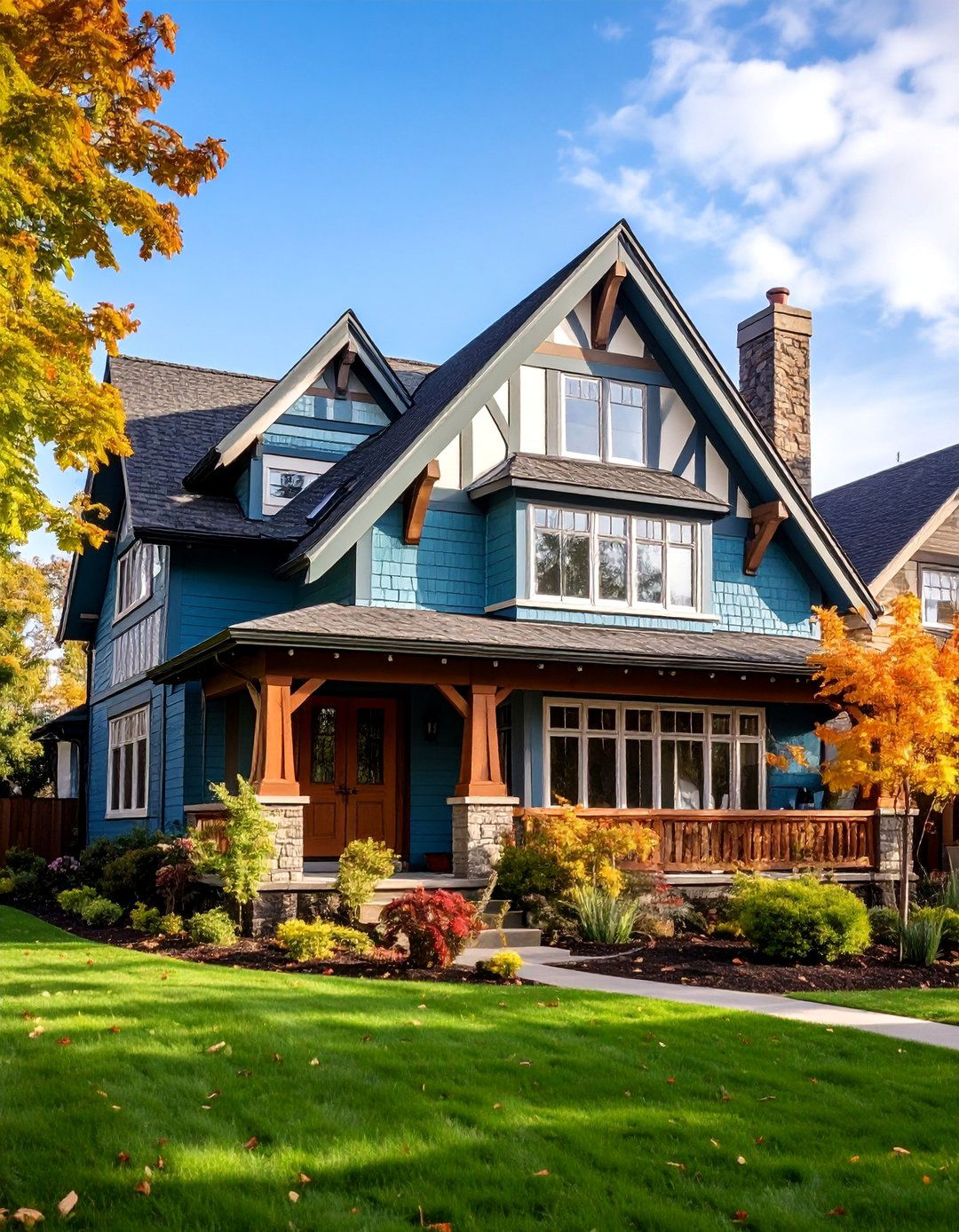
Advanced fiber cement products provide the appearance of traditional Tudor materials while offering superior durability and reduced maintenance requirements. These engineered materials can replicate wood grain, stucco texture, or smooth finish options while resisting weather, pests, and fire far better than natural materials. The products install with modern techniques that ensure proper water management and thermal performance. Color options include the full range of traditional Tudor palettes while maintaining color consistency that natural materials cannot provide. This approach particularly appeals to homeowners seeking authentic Tudor appearance without the ongoing maintenance that traditional materials require. Fiber cement applications prove that contemporary building science can enhance rather than compromise architectural authenticity. The material choice provides excellent long-term value through reduced maintenance costs while ensuring the home maintains its Tudor character through careful attention to proportions, details, and color selection that honors historical precedent.
16. Modern Tudor Exterior with Outdoor Living Space Integration

Covered patios and outdoor kitchens extend Tudor homes into landscape settings through architectural elements that maintain the style's proportions and material palette. Stone or brick patio surfaces echo facade materials while timber or steel structures support necessary overhead coverage. These outdoor spaces often feature the same arched openings and geometric patterns found on the main house, creating unified design that flows seamlessly from interior to exterior. Modern amenities like built-in grills, fire features, and weather-resistant furnishing storage integrate discreetly into traditional architectural forms. This approach appeals to homeowners who appreciate Tudor aesthetics but require contemporary outdoor entertainment capabilities. The design strategy proves that historical styles can adapt to modern lifestyle requirements without sacrificing architectural integrity. Careful material selection and proportional relationships ensure these additions enhance rather than detract from the Tudor's essential character while providing valuable additional living space.
17. Modern Tudor Exterior with Exposed Steel Beam Accents

Contemporary steel elements provide structural and visual interest while honoring the Tudor tradition of exposed structural components. Black or weathering steel beams can support roof overhangs, frame large window openings, or create decorative elements that reference traditional timber framing through modern materials. The steel's strength allows for larger spans and more open designs than traditional timber construction permits. These elements work particularly well in covered entry areas, patio structures, or where contemporary additions meet historical portions of homes. The material choice appeals to homeowners who appreciate industrial aesthetics integrated thoughtfully with traditional architecture. Steel's durability and minimal maintenance requirements provide practical benefits while its dark color complements traditional Tudor color palettes. This design approach demonstrates how contemporary materials can enhance rather than compromise historical architectural character when applied with appropriate scale, proportion, and sensitivity to existing design elements.
18. Modern Tudor Exterior with Energy-Efficient Window Systems

High-performance glazing systems provide superior thermal efficiency while maintaining Tudor proportions and authentic appearance through carefully selected frame materials and installation techniques. Triple-pane glass units fit within traditional window openings while dramatically improving energy performance. Modern frame materials like fiberglass or engineered wood provide excellent insulation while accepting traditional paint finishes and hardware applications. These systems often incorporate traditional glazing patterns while meeting contemporary performance standards for air sealing and thermal bridging prevention. The approach appeals to homeowners seeking environmental responsibility without sacrificing architectural authenticity. Energy-efficient systems prove that historical styles can embrace contemporary building science through thoughtful specification and installation practices. The investment in premium window systems provides long-term value through reduced energy costs while maintaining the Tudor's essential character through appropriate proportions, materials, and detailing that respect both tradition and modern performance requirements.
19. Modern Tudor Exterior with Minimalist Half-Timber Detailing

Simplified timber applications eliminate ornate traditional patterns in favor of clean, geometric arrangements that maintain Tudor identity while feeling contemporary. Wide, flat boards create bold graphic elements against smooth backgrounds without the busy complexity that can make traditional half-timbering feel overwhelming. The minimal approach allows other architectural elements—windows, doors, chimneys—to provide necessary visual interest through proportion and placement rather than decorative complexity. Dark timber colors maintain authenticity while sharp edges and precise installation create contemporary crispness. This design strategy works particularly well for smaller homes where excessive detailing might feel disproportionate. The approach appeals to homeowners who appreciate Tudor character but prefer restrained decorative applications that won't become dated or require extensive maintenance. Minimalist detailing proves that architectural authenticity depends more on proportion and material quality than decorative complexity, allowing Tudor homes to feel both traditional and contemporary simultaneously.
20. Modern Tudor Exterior with Custom Masonry Chimney Design
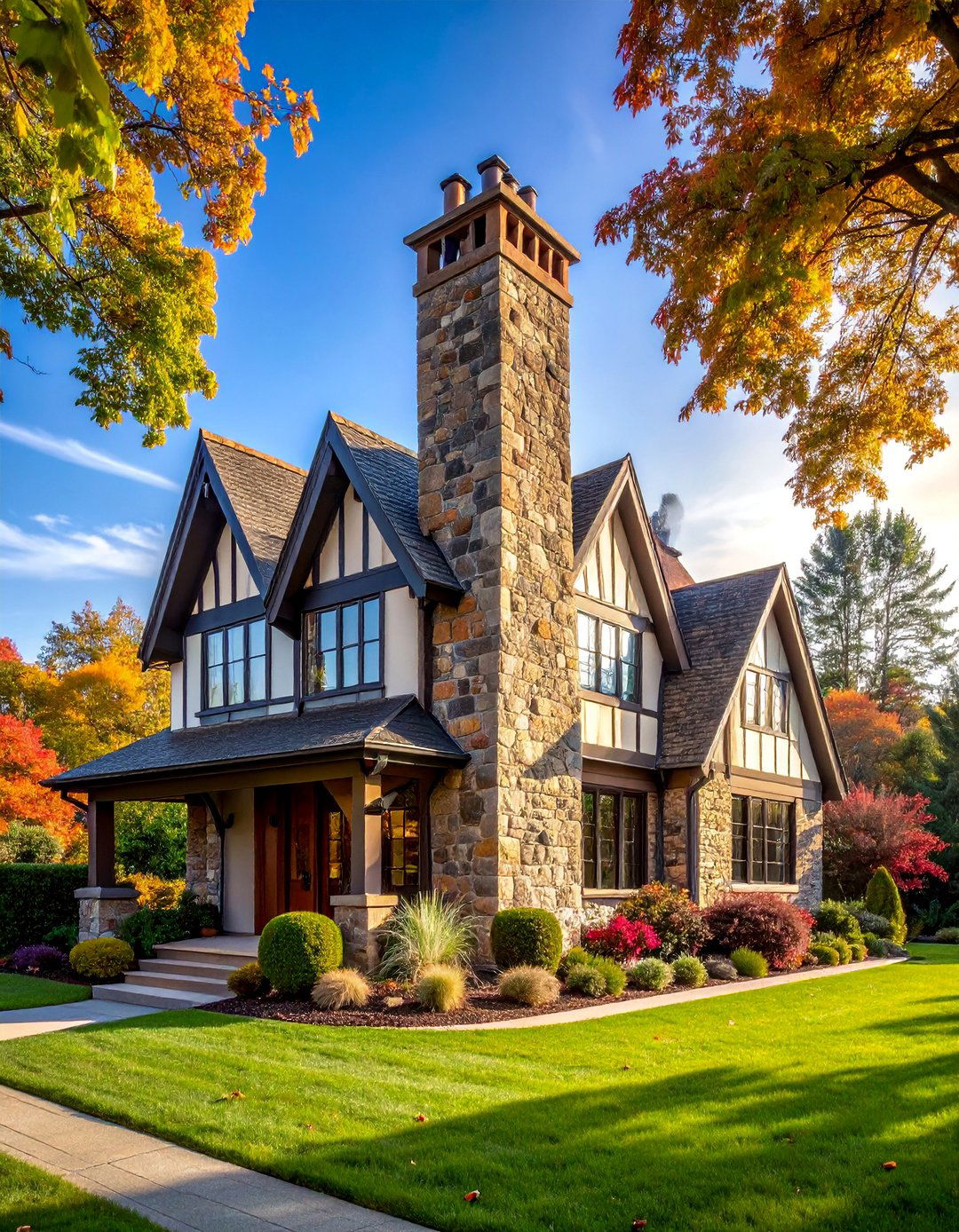
Dramatic chimney structures serve as sculptural focal points that anchor Tudor compositions while incorporating contemporary materials and construction techniques. Oversized proportions and clean geometric forms honor Tudor traditions while embracing modern masonry applications. Stone, brick, or stucco chimney designs can incorporate traditional elements like corbelling or cap detailing while maintaining contemporary proportions and installation methods. These structures often extend well above rooflines, creating striking vertical elements that enhance the home's dramatic profile. Modern flue systems and fireplace technologies integrate discreetly within traditional exterior forms. This approach appeals to homeowners who appreciate Tudor architecture's emphasis on substantial masonry construction while requiring contemporary heating efficiency and safety standards. Custom chimney designs prove that traditional architectural elements can embrace modern building science while maintaining their essential character as prominent exterior features that define Tudor homes' distinctive silhouettes and authentic material presence.
21. Modern Tudor Exterior with Sustainable Material Applications

Environmentally responsible material choices support Tudor aesthetics while meeting contemporary sustainability goals through recycled content, local sourcing, and reduced environmental impact. Reclaimed brick, sustainably harvested timber, and low-impact stucco systems provide authentic appearance while supporting environmental stewardship. Modern installation techniques ensure these sustainable materials perform reliably while maintaining traditional Tudor proportions and detailing. The approach often incorporates features like rainwater collection systems, permeable paving, and native landscaping that complement rather than compete with architectural elements. This design strategy appeals to environmentally conscious homeowners who refuse to compromise architectural authenticity for sustainability goals. Sustainable Tudor applications prove that environmental responsibility and historical accuracy can coexist successfully through thoughtful material selection and installation practices. The approach provides excellent long-term value through reduced environmental impact while ensuring the home maintains its essential Tudor character through careful attention to proportion, texture, and color relationships that honor traditional precedent.
22. Modern Tudor Exterior with Automotive Court Integration
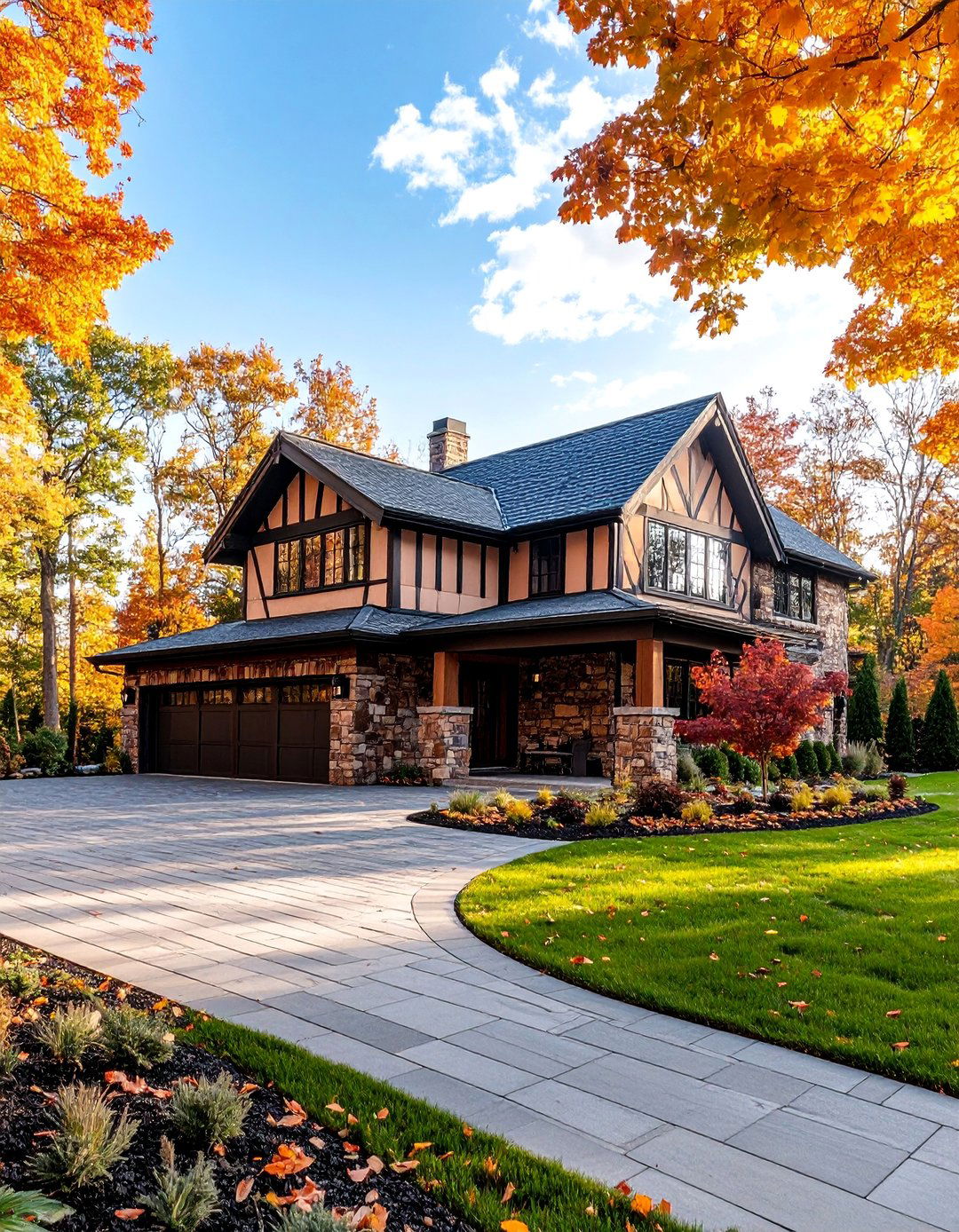
Dedicated parking areas incorporate Tudor architectural elements through covered structures, material selections, and landscape design that maintain the home's character while addressing contemporary vehicle storage needs. Stone or brick paving, overhead structures with Tudor proportions, and strategic landscaping create functional parking areas that enhance rather than detract from overall design. These spaces often feature the same arched openings, material palettes, and proportional relationships found on main houses. Modern convenience features like electric vehicle charging stations integrate discreetly into traditional architectural forms. This approach appeals to homeowners who appreciate Tudor aesthetics but require substantial parking for contemporary vehicle sizes and numbers. Automotive court designs prove that practical modern requirements can enhance rather than compromise architectural authenticity through careful planning and material selection. The integration demonstrates how historical styles can adapt to contemporary needs while maintaining their essential character through unified design approaches.
23. Modern Tudor Exterior with Mixed-Height Gable Compositions
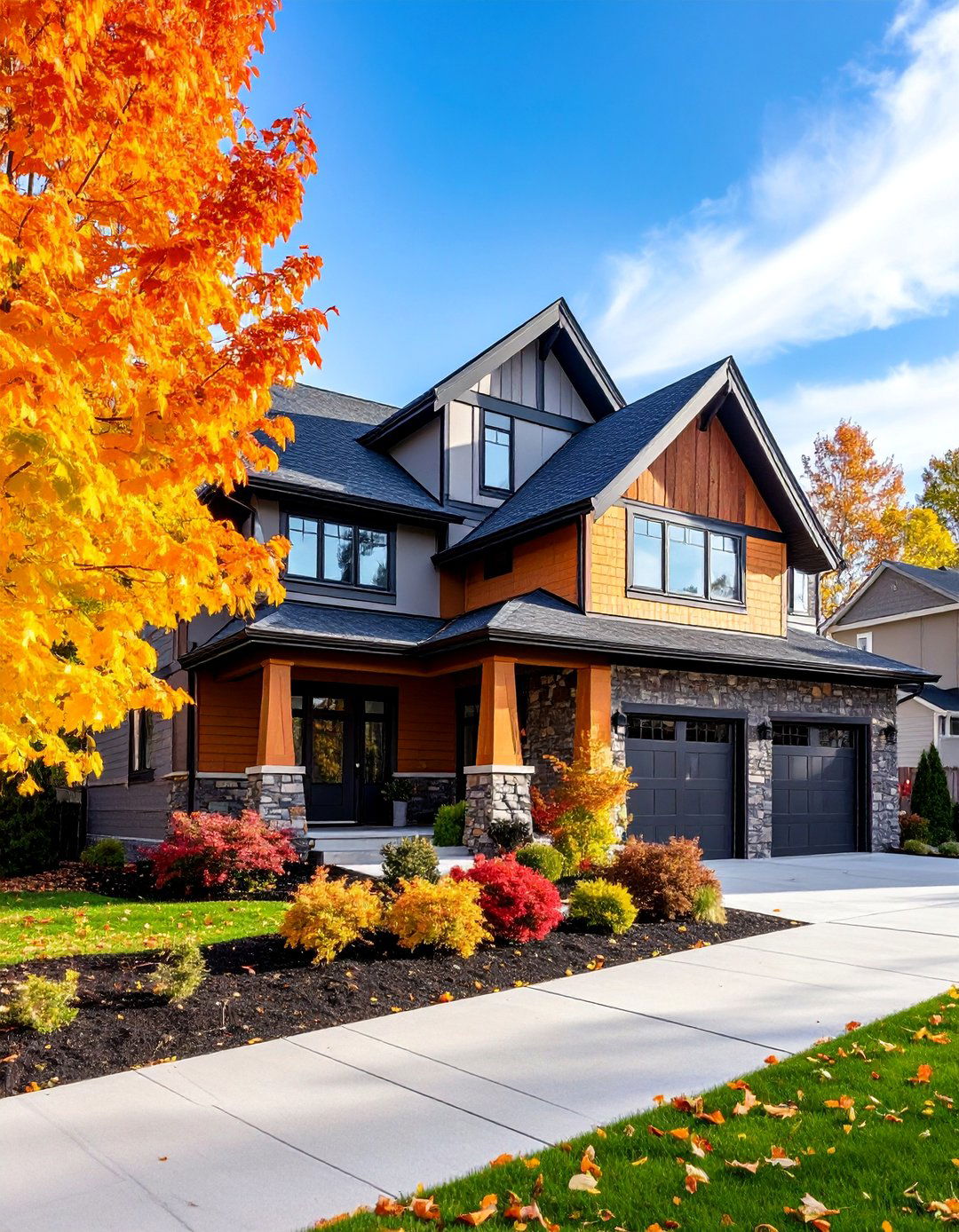
Varied gable heights and orientations create dynamic rooflines that honor Tudor traditions while providing contemporary spatial flexibility and visual interest. Multiple front-facing gables of different scales allow for varied interior ceiling heights and room configurations that support modern living requirements. The composition strategy works particularly well for larger homes where single large gables might feel overwhelming or disproportionate. Modern structural systems support these complex roof forms while ensuring proper water management and thermal performance. This approach appeals to homeowners seeking Tudor character with contemporary spatial variety and architectural complexity. Mixed-height compositions prove that traditional Tudor principles can support creative contemporary applications through thoughtful proportion and relationship studies. The design strategy allows for both intimate and grand interior spaces while maintaining exterior coherence through consistent material applications and careful attention to how various gable elements relate to each other and the overall composition.
24. Modern Tudor Exterior with Contemporary Color-Blocking Techniques
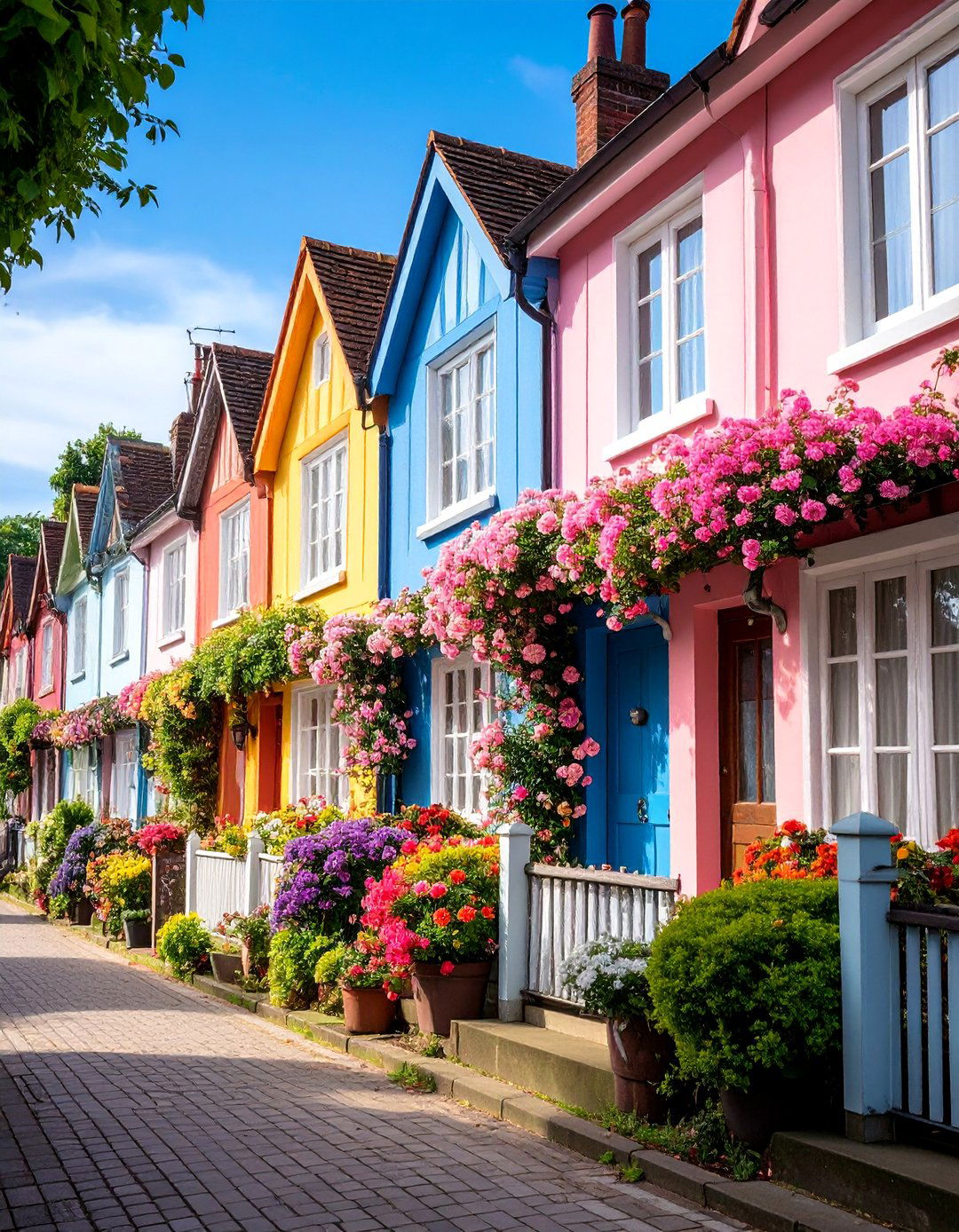
Bold color applications create striking contemporary interpretations that maintain Tudor proportions while embracing modern graphic sensibilities. Strategic color placement emphasizes architectural elements—gables, entries, window surrounds—through contrasting tones that create visual hierarchy and interest. This approach often eliminates traditional half-timbering in favor of large color planes that simplify compositions while maintaining Tudor scale and proportion. The color-blocking strategy works particularly well for homeowners seeking distinctive contemporary appearance while respecting neighborhood architectural character. Modern paint technologies provide excellent durability and color retention while supporting bold design statements. This design approach proves that Tudor forms can successfully support contemporary color applications through careful attention to proportion and architectural hierarchy. The technique appeals to homeowners who appreciate both Tudor architecture and contemporary graphic design, creating homes that honor tradition while embracing current aesthetic preferences through thoughtful color selection and application strategies.
25. Modern Tudor Exterior with Smart Home Technology Integration

Contemporary technology systems integrate discreetly into Tudor exteriors through careful planning and component selection that maintains architectural authenticity while providing modern convenience and security. Smart lighting systems, security cameras, and communication devices incorporate into traditional architectural elements without compromising visual integrity. Modern installation techniques ensure proper function while concealing necessary wiring and equipment within traditional building assemblies. This approach often includes features like automated landscape lighting, security systems, and communication devices that enhance rather than detract from Tudor character. The integration appeals to homeowners seeking contemporary convenience without sacrificing architectural authenticity. Smart home applications prove that traditional architectural styles can embrace modern technology through thoughtful planning and installation practices. The approach provides excellent functionality while ensuring the home maintains its essential Tudor character through careful attention to how contemporary systems integrate with traditional proportions, materials, and detailing that define authentic Tudor architecture.
Conclusion:
Modern Tudor exteriors successfully demonstrate how classical architectural principles can evolve to meet contemporary needs while preserving their essential character and timeless appeal. These innovative interpretations prove that historical styles remain relevant through thoughtful material selection, updated color palettes, and integration of modern technologies and lifestyle requirements. From sustainable building practices to smart home integration, today's Tudor homes embrace both tradition and innovation, creating residences that honor architectural heritage while supporting modern living standards and environmental responsibility for future generations.


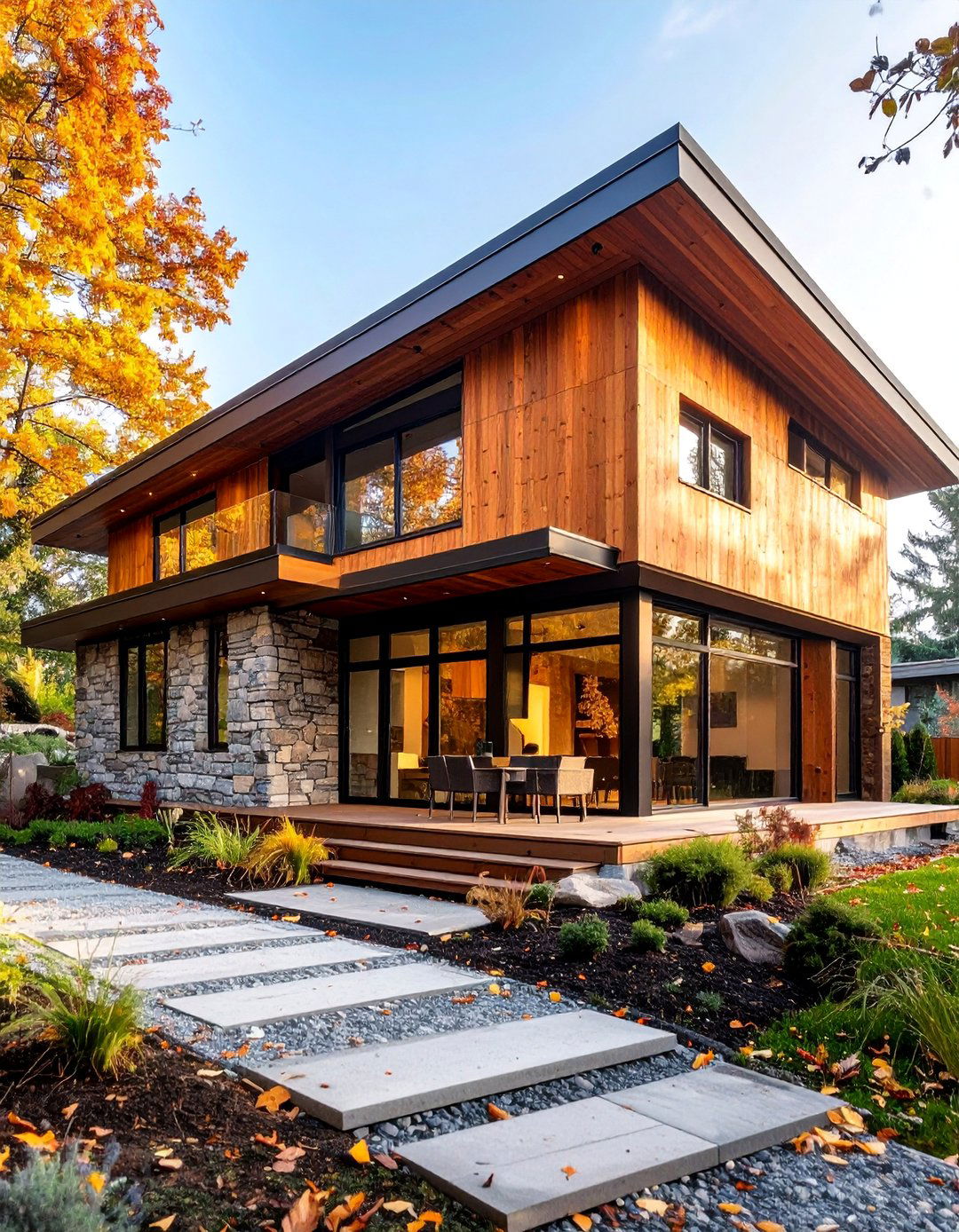
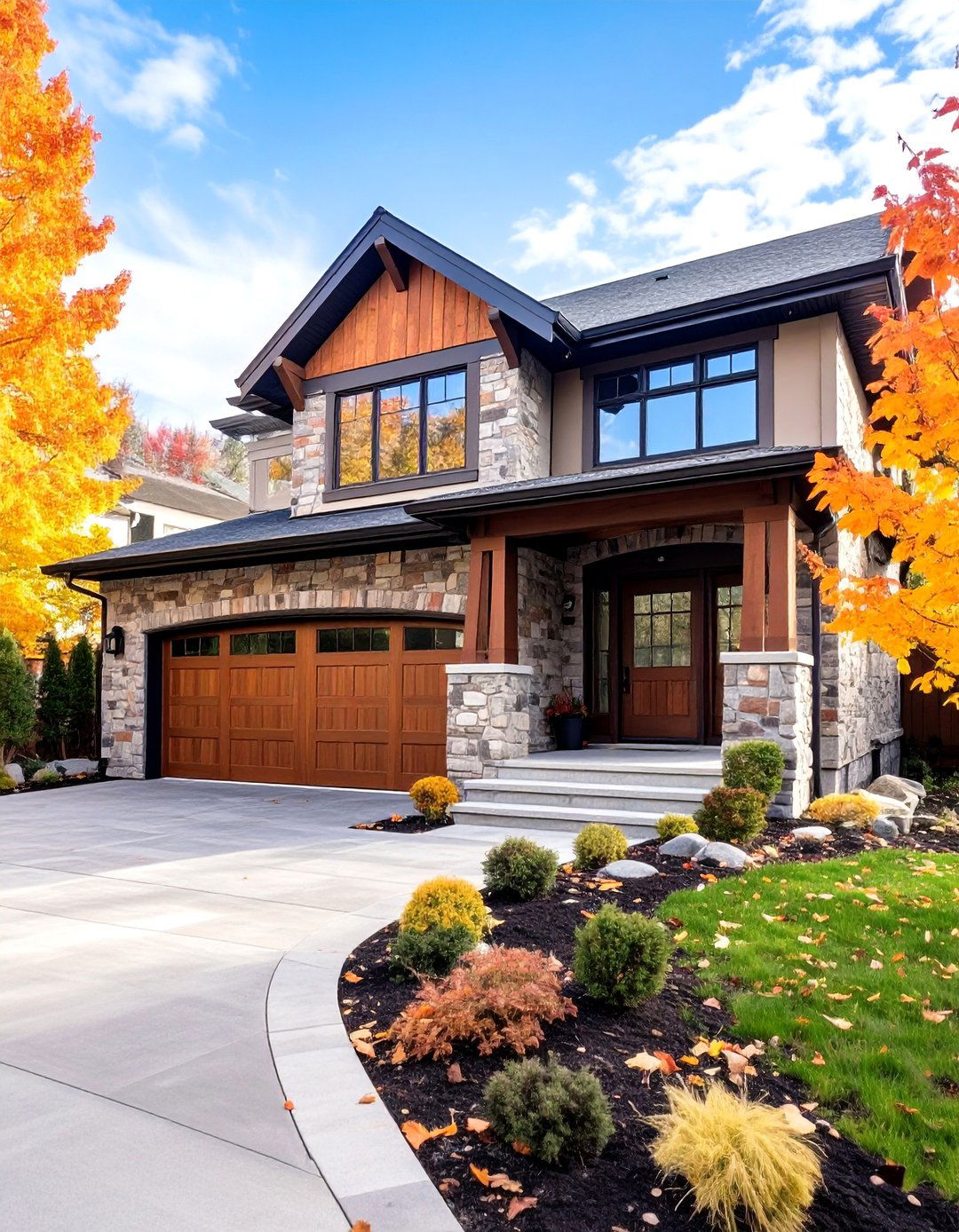
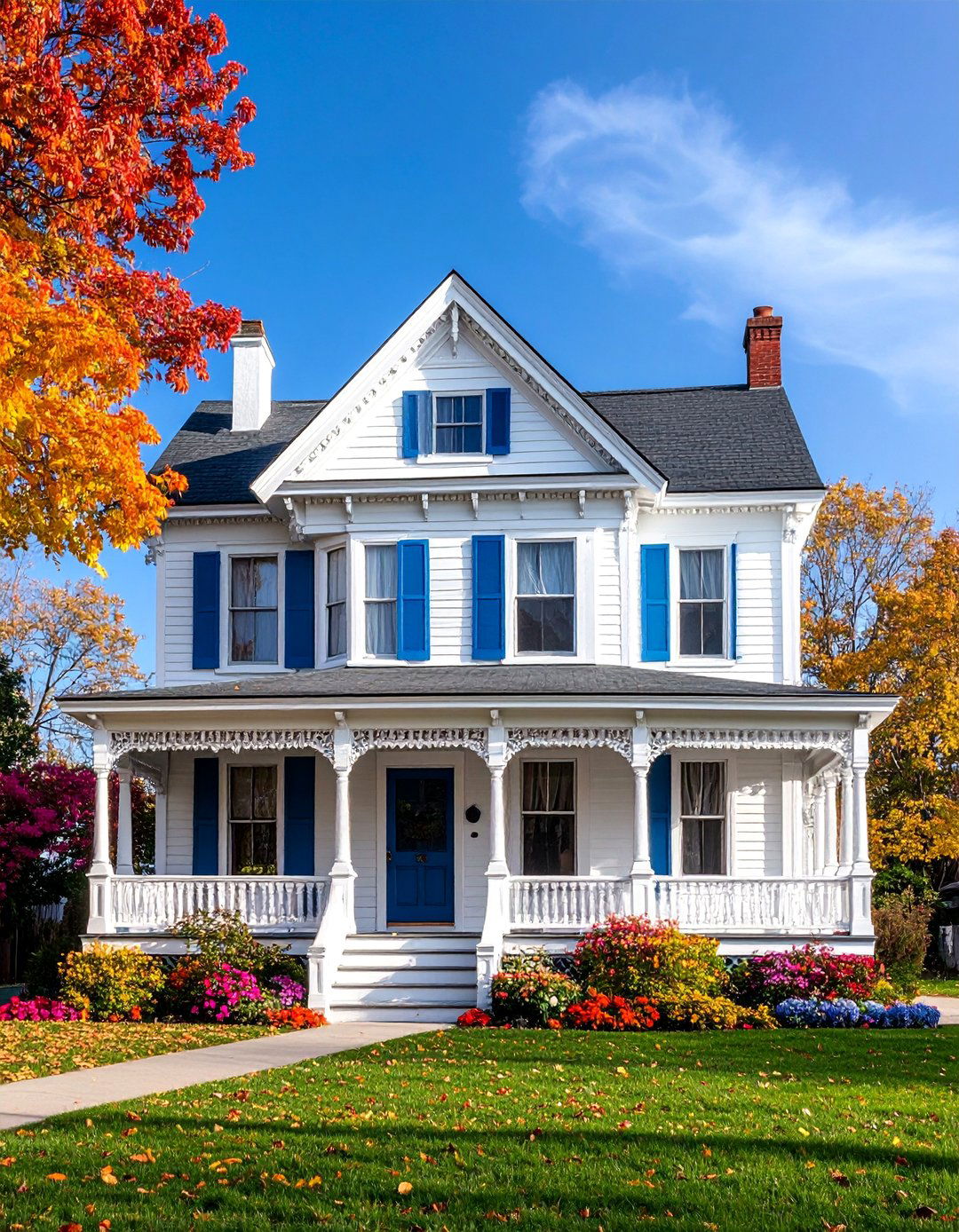
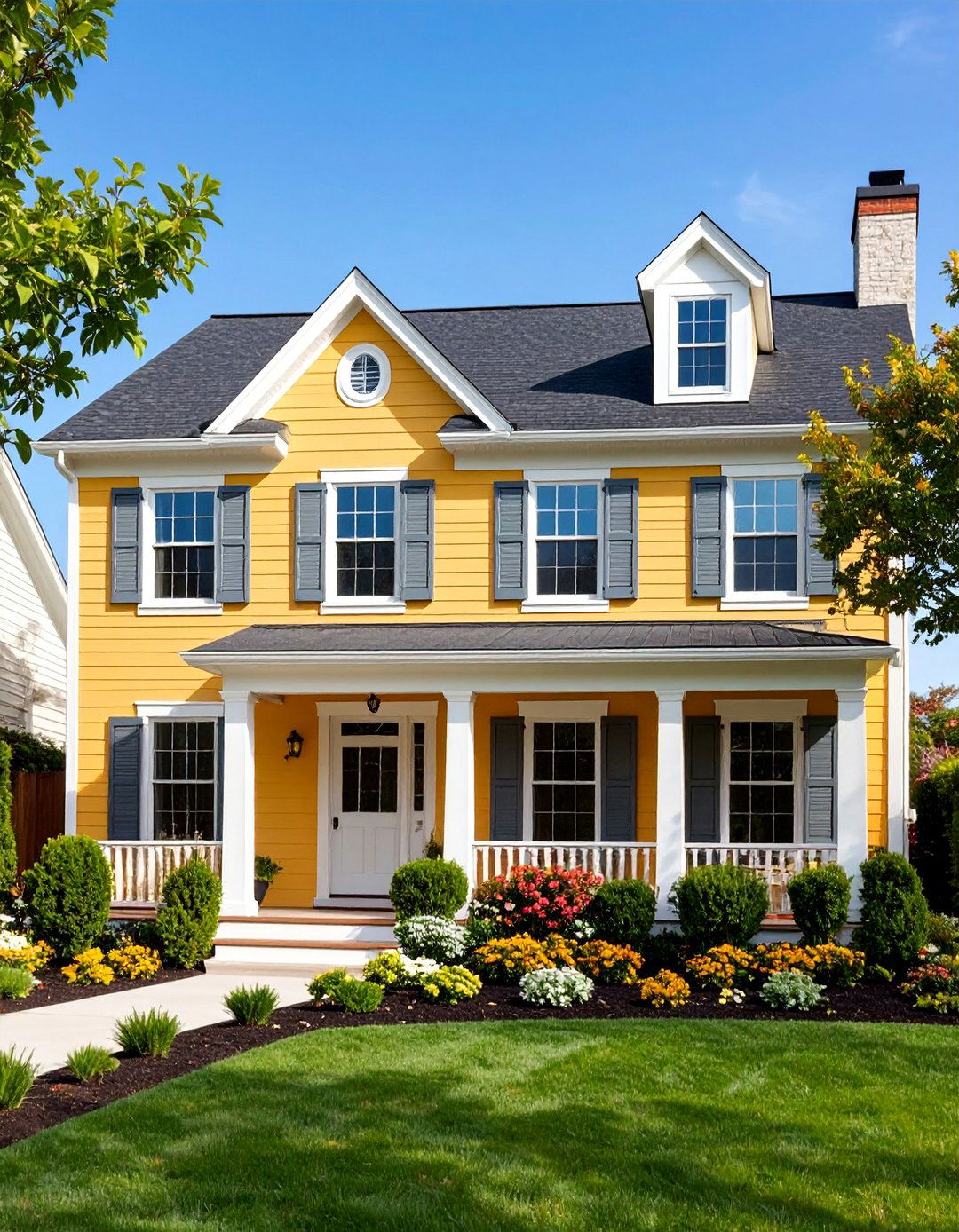
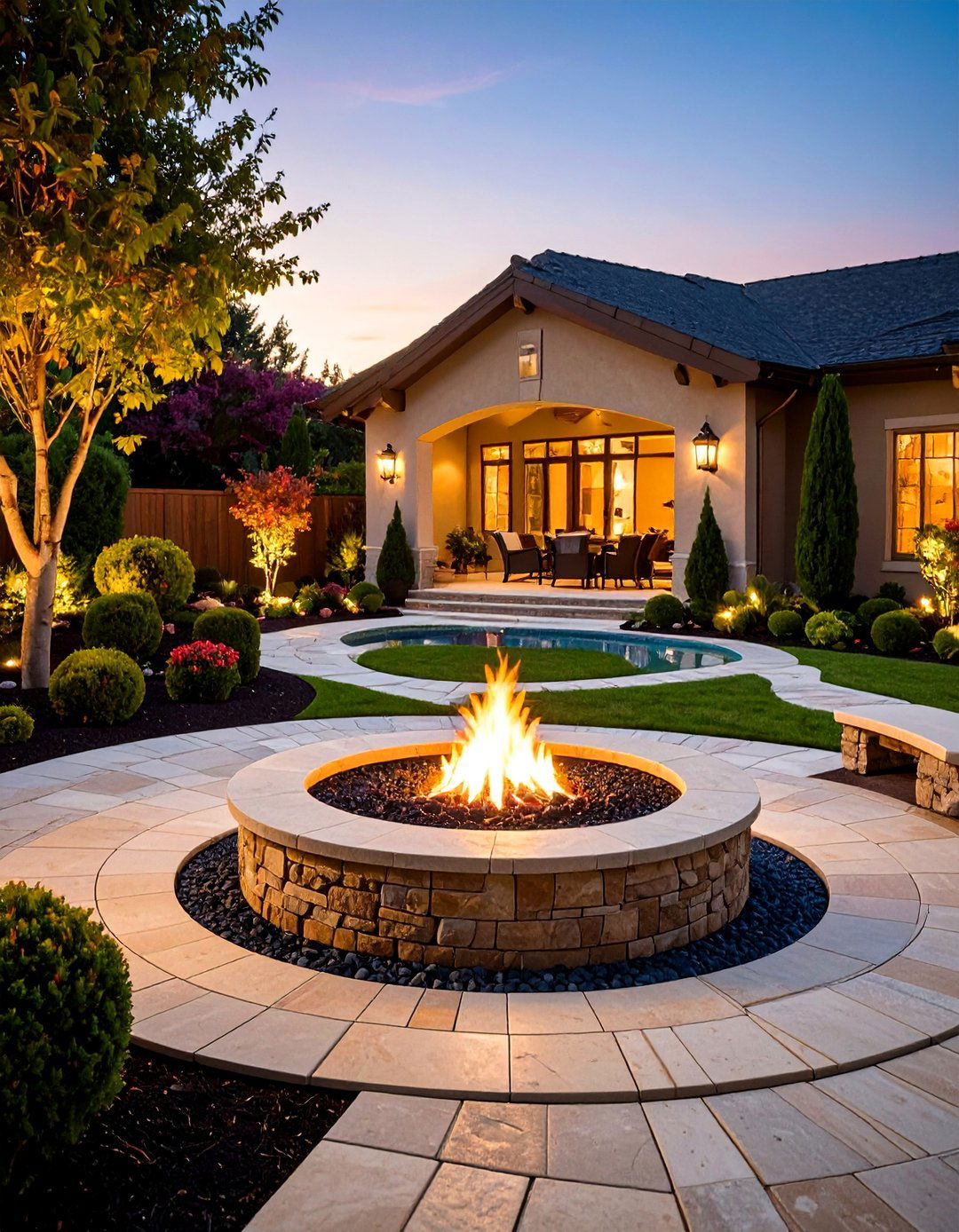
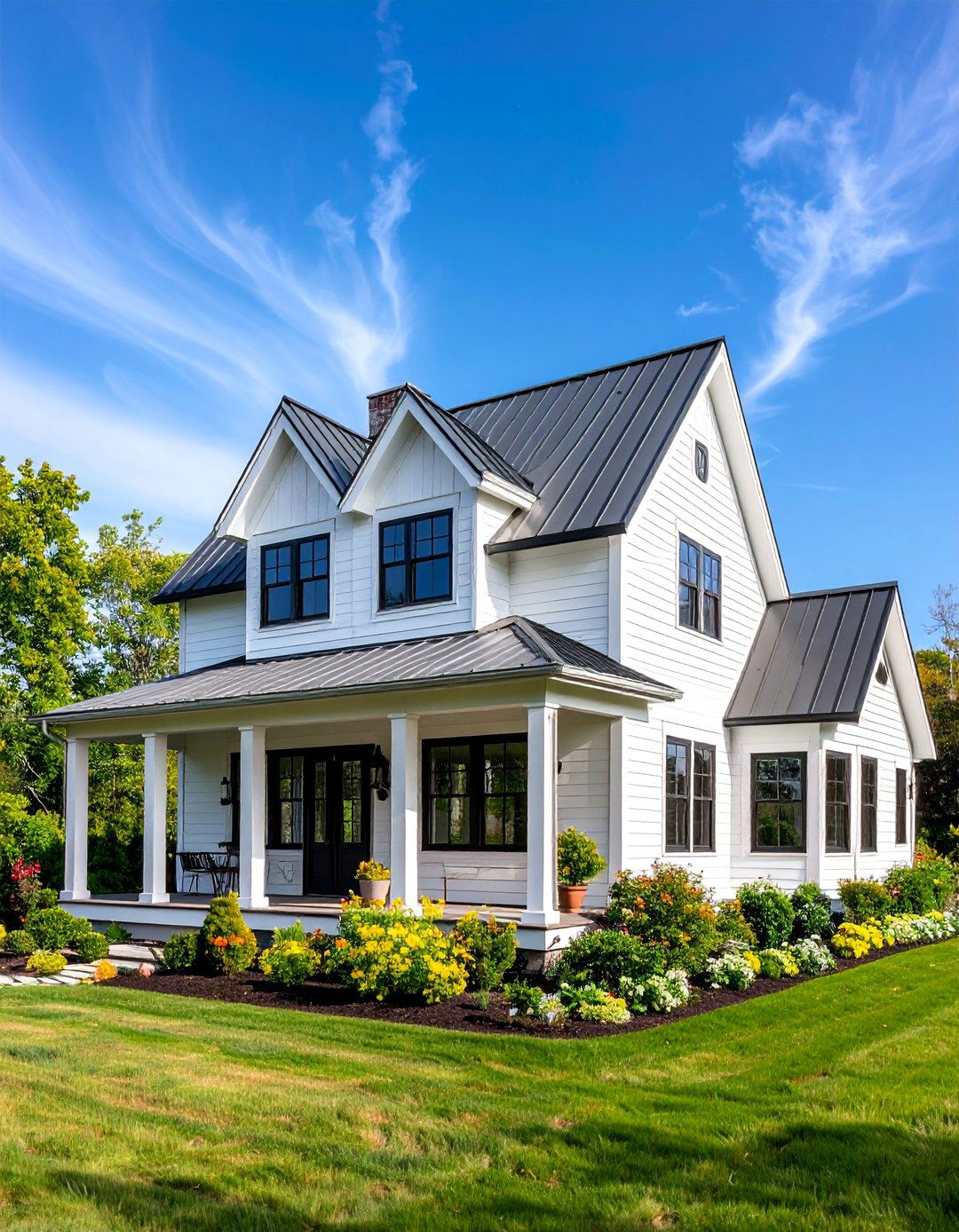

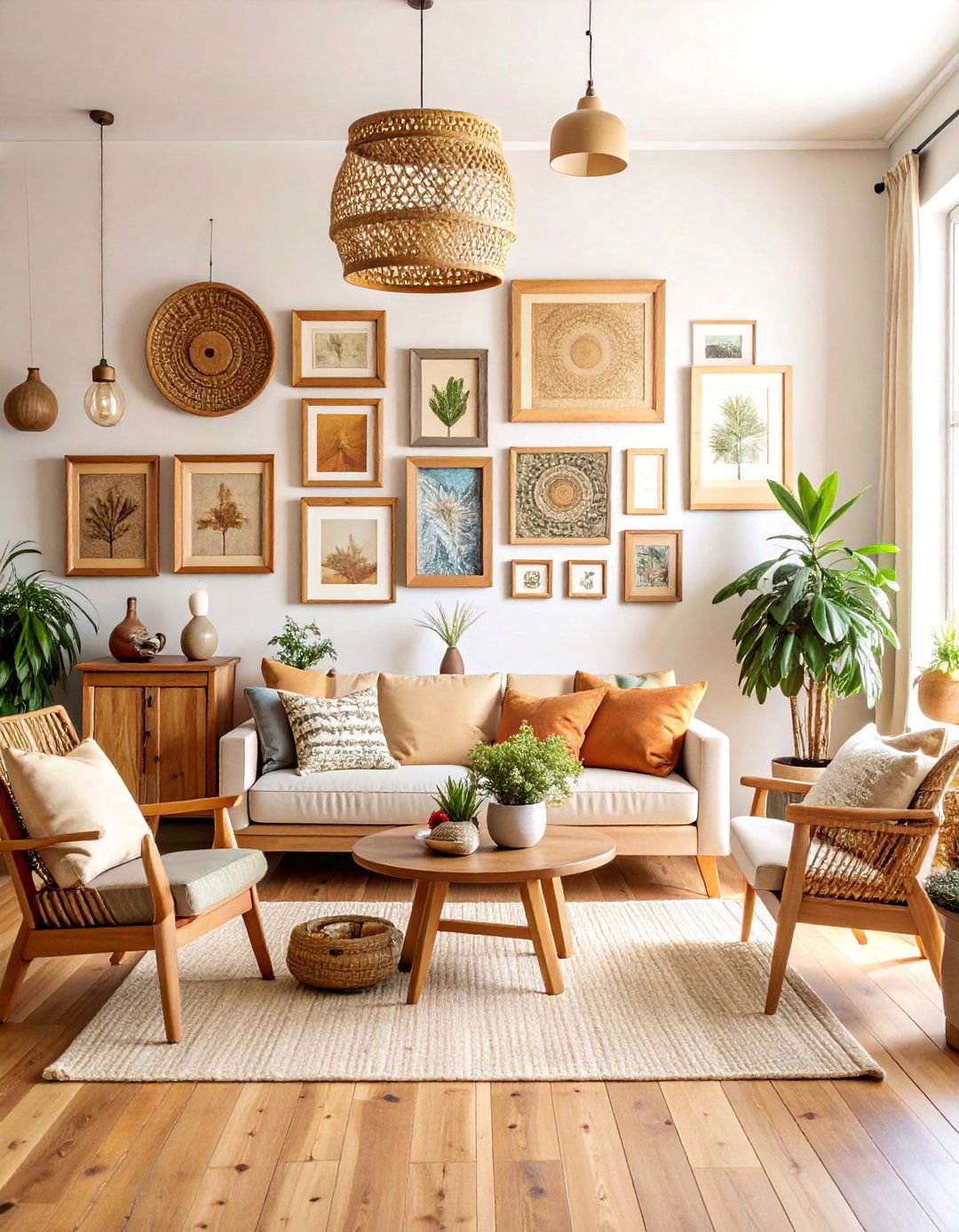

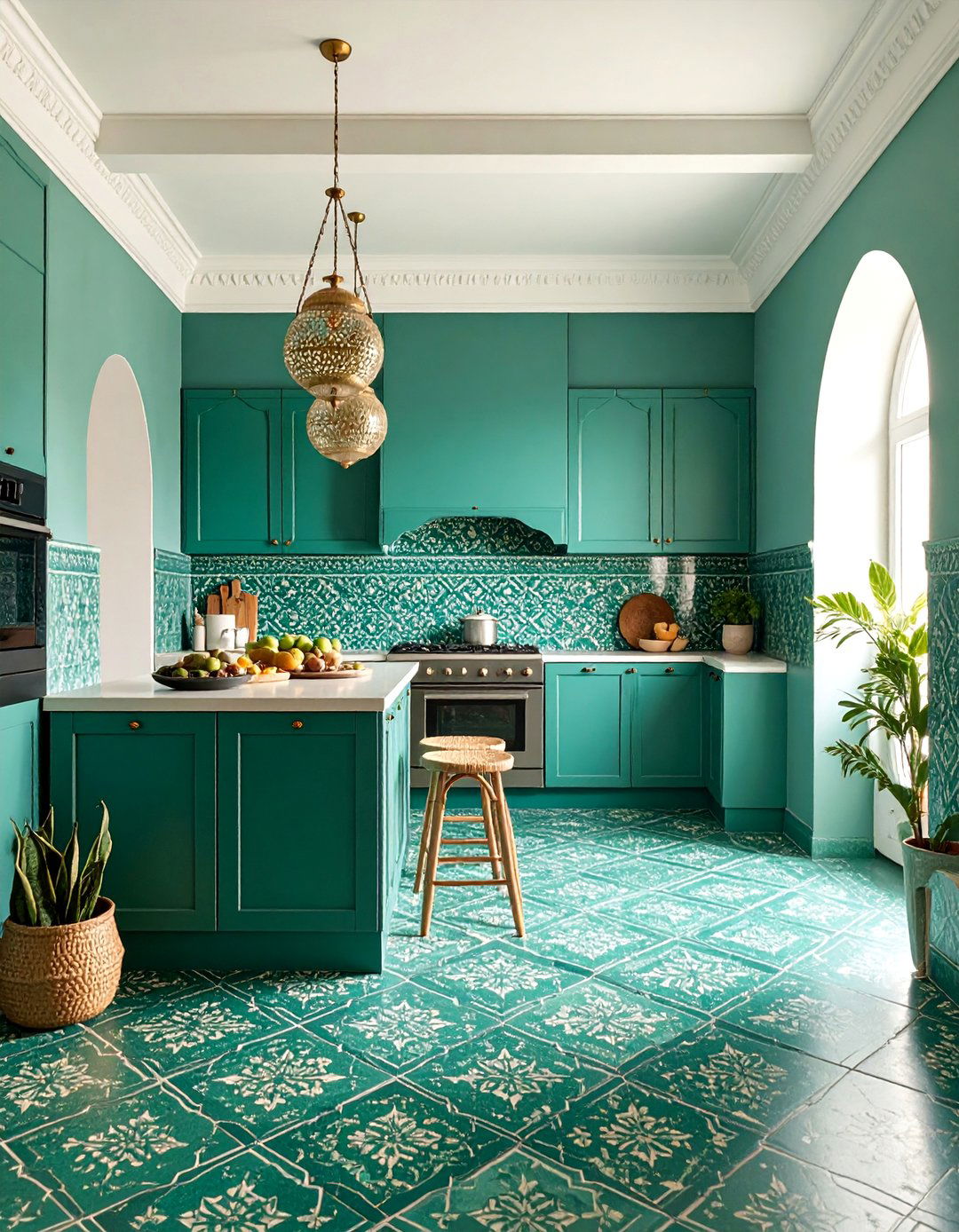

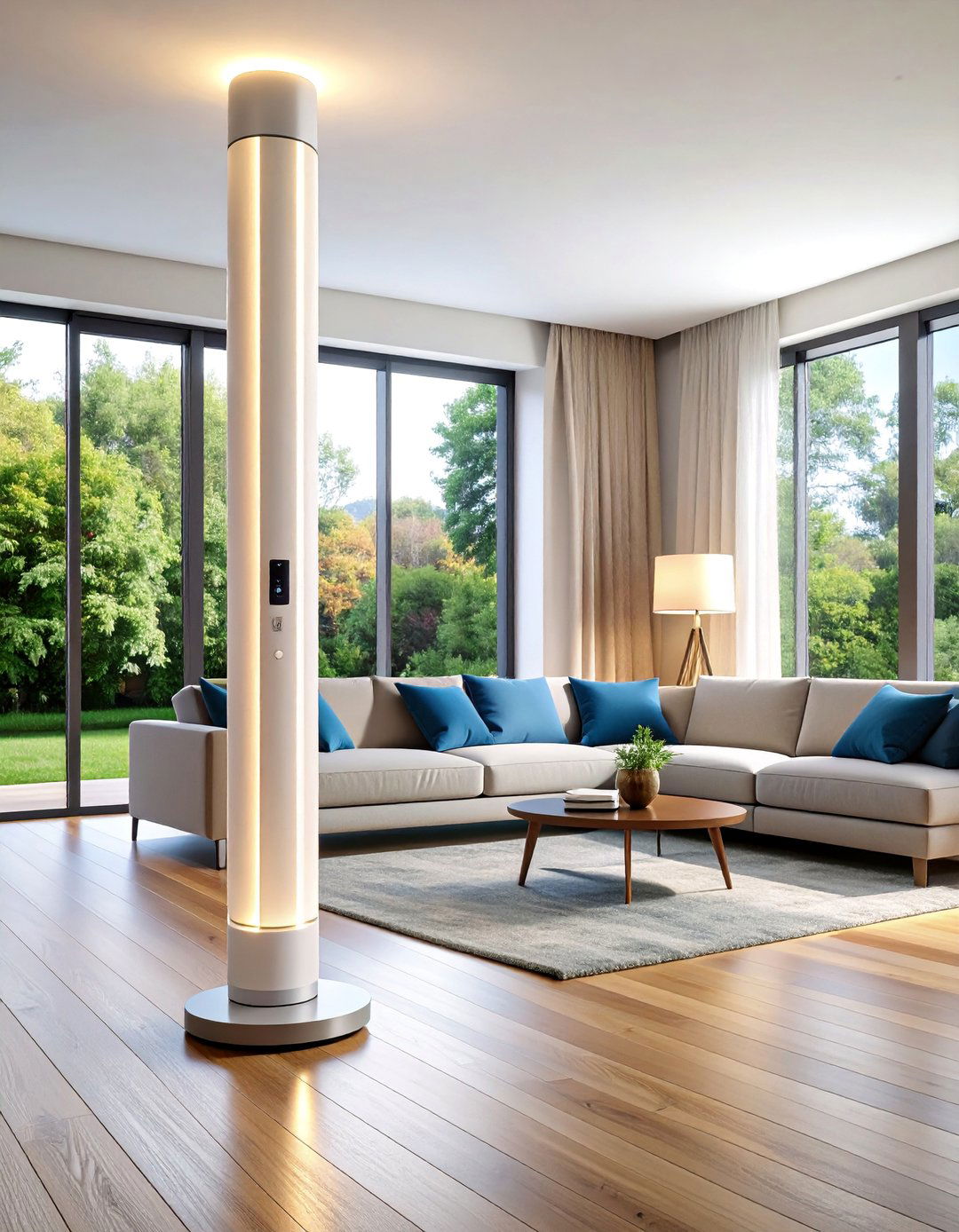
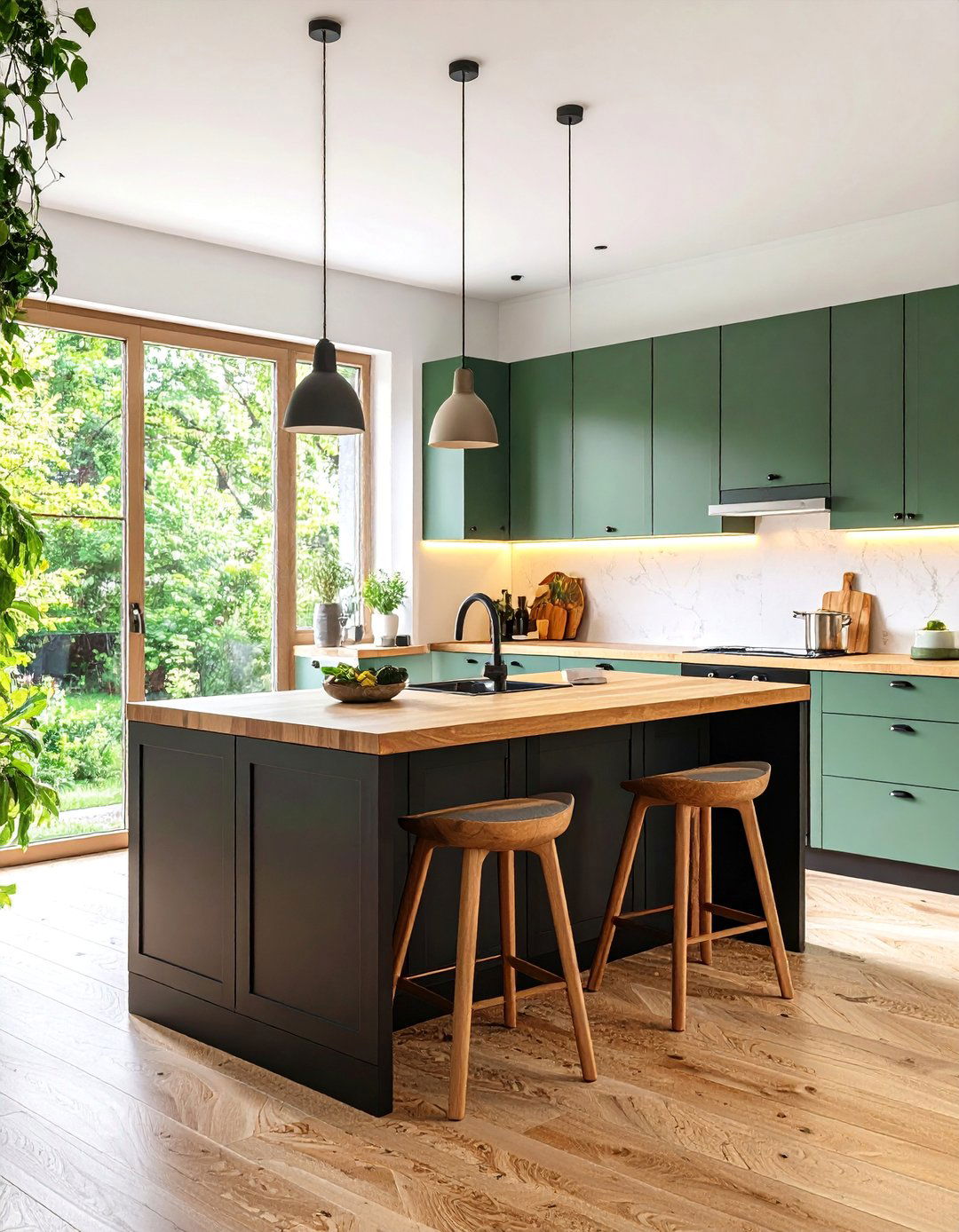
Leave a Reply